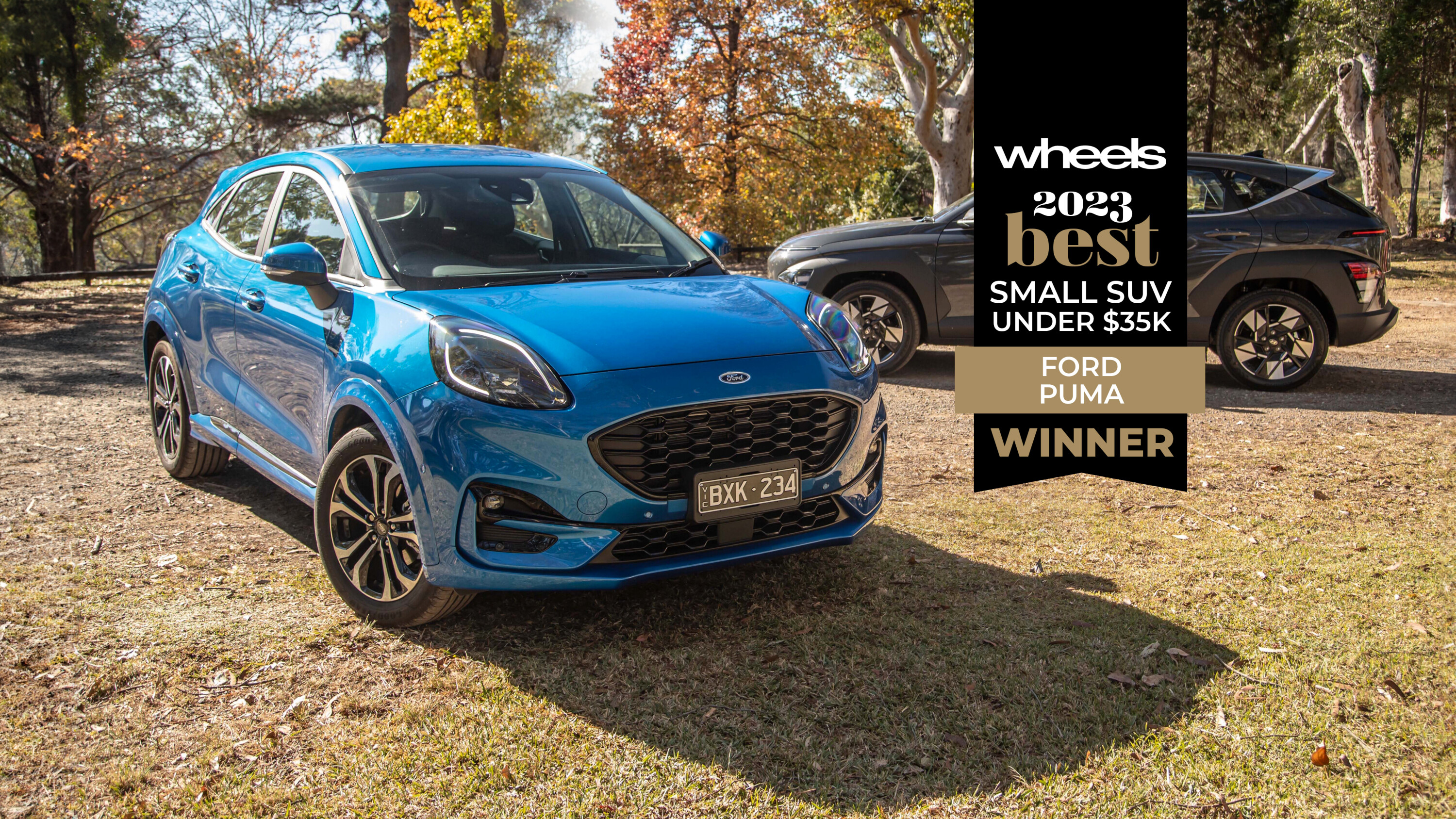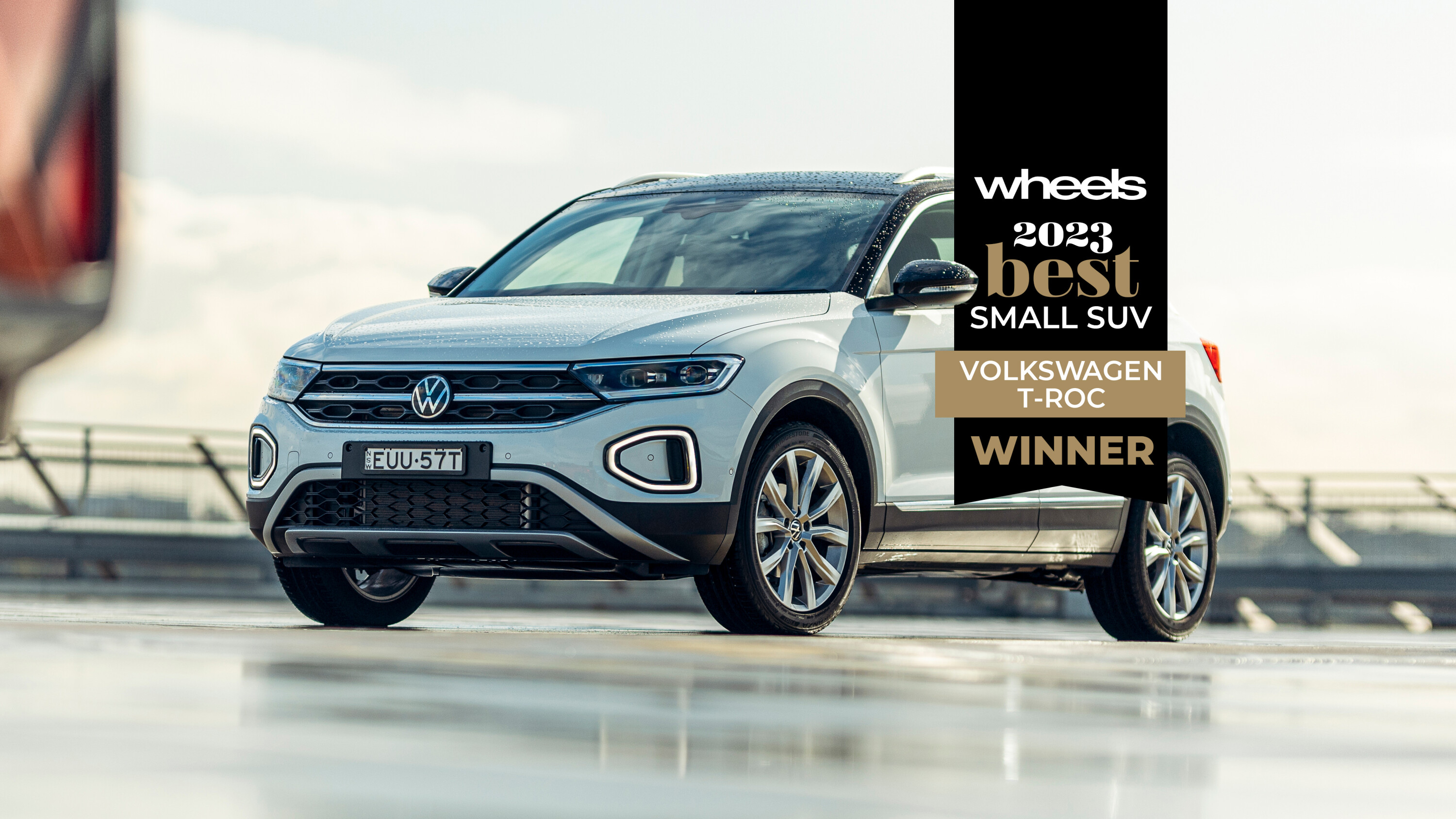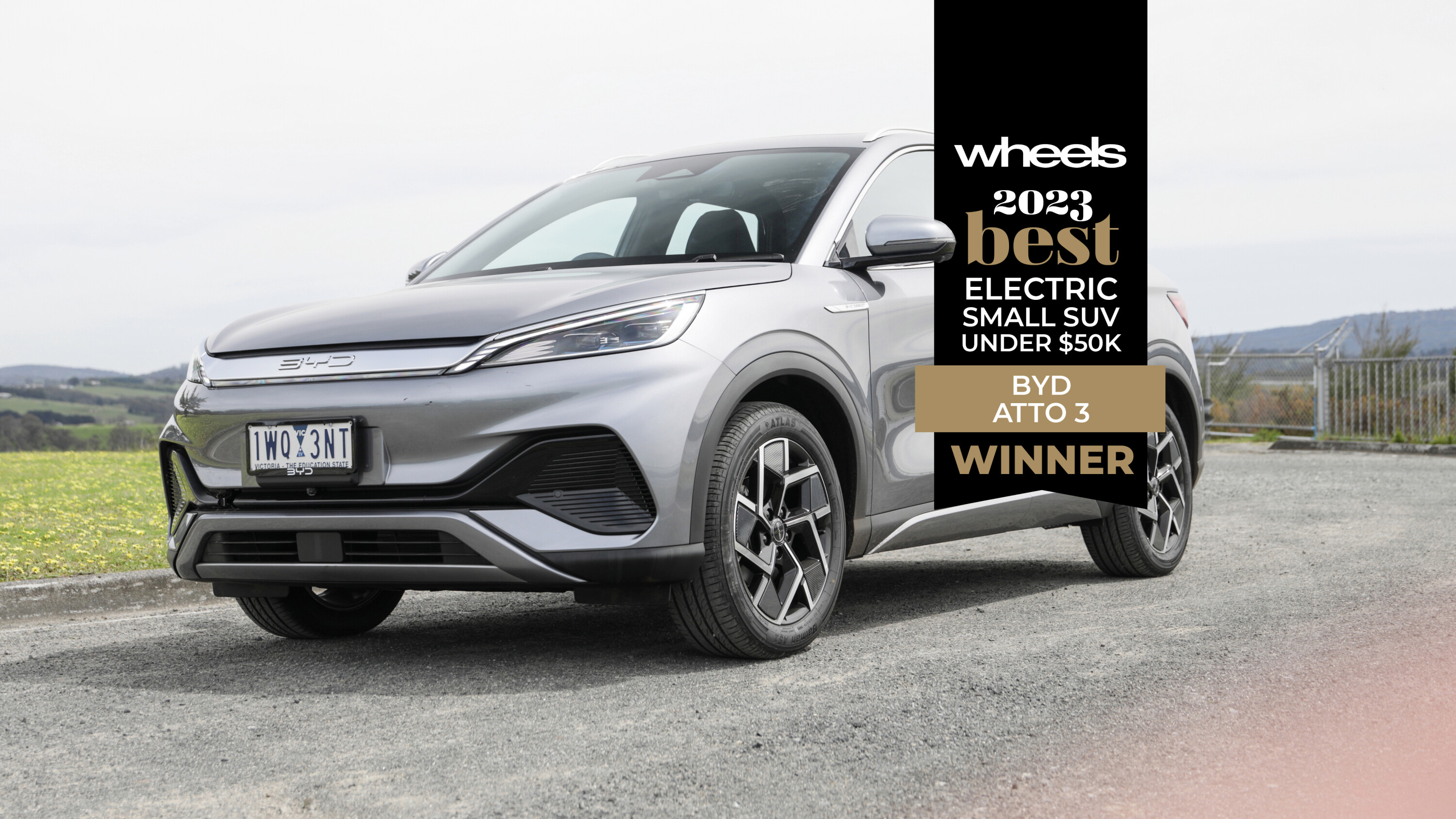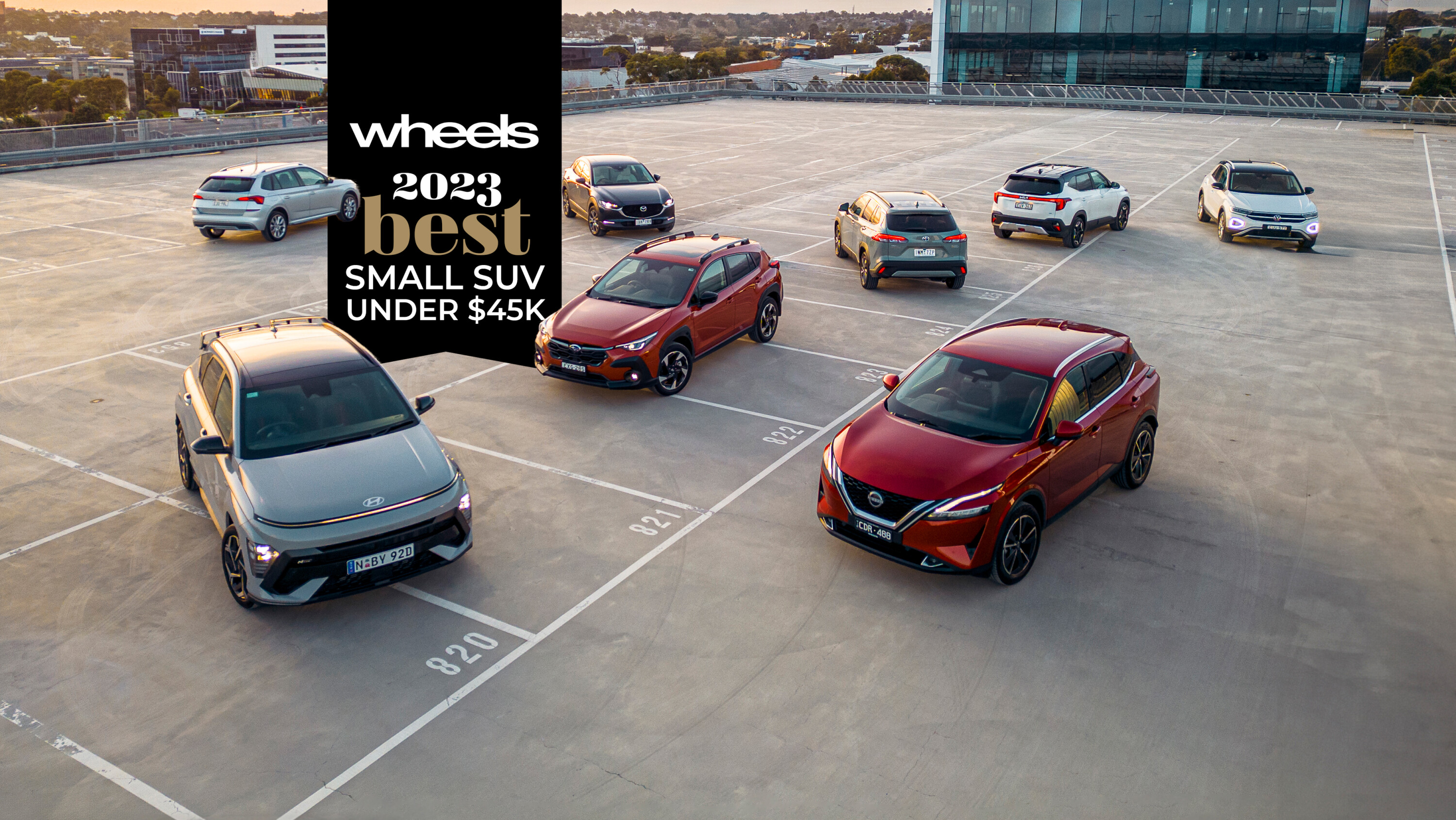
Humans are getting taller. In 150 years, thanks to improvements in nutrition and medicine, the average height of a human living in an industrialised nation has grown a staggering 10cm.
The same has been happening with cars for decades now. Formerly dominant small cars like Corolla and Golf are being bullied out of existence by younger siblings who’ve simply grown taller. The trend isn’t going away either. Since 2013, sales of small “C-segment” SUVs have risen from around 75,000 to almost 200,000 last year as more models hit the market.
Today’s objective is to compare eight of them, representing the sharpest and cleverest of the small SUV lot – all around $45K. The newest is the Hyundai Kona – here in $46,500 N-Line Premium guise – its space-age exterior concealing a clever new interior that almost makes the Kona feel a size larger than it actually is.
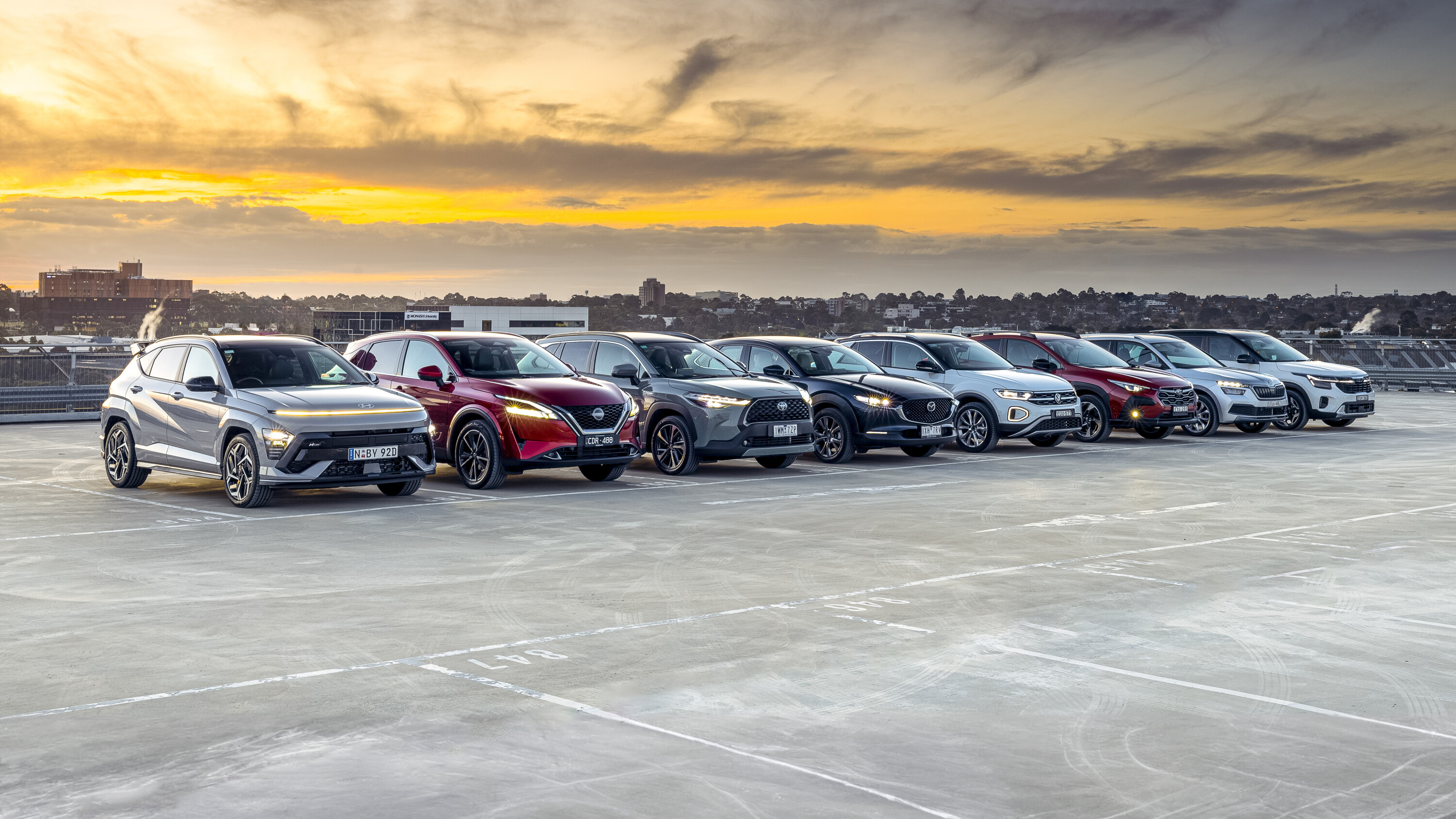
Taking on the Kona, in alphabetical order, we begin with its Korean cousin, the Kia Seltos.
Our top-spec GT-Line AWD uses the same 146kW 1.6-litre turbo engine and at $44,900 it undercuts the Kona by a small, but still useful, margin.
Next up, we have Mazda’s CX-30. At $45,310, our G25 Astina AWD packs the bigger, punchier 139kW 2.5-litre motor and all that clever engineering that made it our 2021 Car of the Year. It will be hard to beat, especially with its Lexus-like interior for a not-very-Lexus-like price.
Nissan’s Qashqai ST-L, meanwhile, is almost the sweetheart of the entire Qashqai range – offering standard 19-inch wheels and a beautiful 12.3-inch touchscreen at a very sharp $42,190. Its 1.3-litre turbo inline-4 also promises to be one of the most economical here.
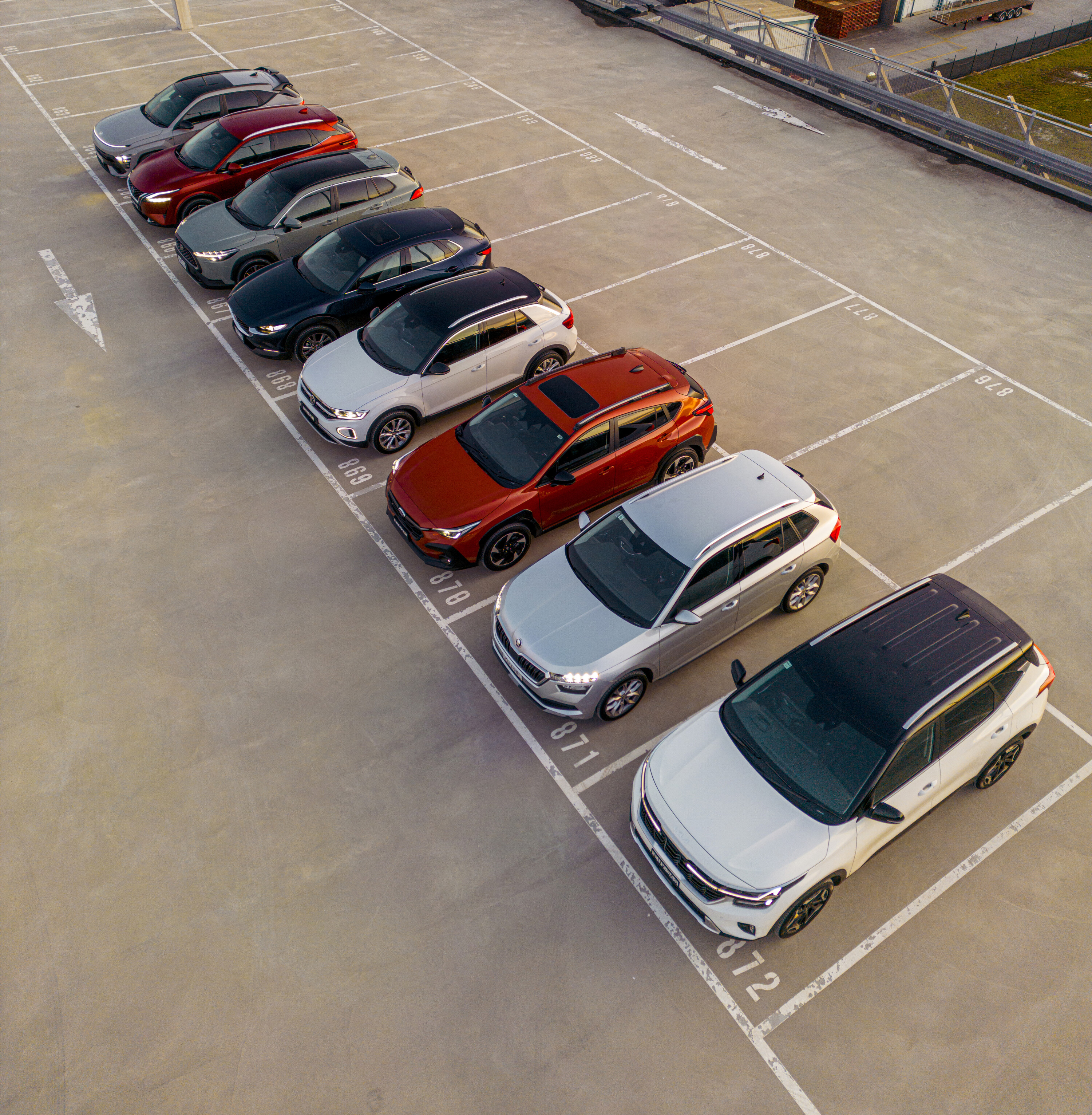
The Skoda Kamiq could upset the lot of them, however.
At $37,990 – drive-away – our Style 85TSI is the cheapest small SUV on-test and Czechs (sorry) plenty of other boxes. But with just 85kW, can its 1.0-litre turbo triple win us over with charm instead?
Subaru’s top-spec Crosstrek S sticks to a tried-and-true formula – but all-wheel-drive is not the USP it once was. At $41,490, it certainly has price going for it, and its low-lying boxer engine and an independent rear-end suspension hold lots of dynamic promise.
The front-drive, torsion-beam Toyota Corolla Cross Atmos hybrid is, at $46,050, the second priciest car here. But it’s also the only hybrid, bringing a level of efficiency that has us wondering if Toyota engineers snuck in some Peter Brock crystals somewhere. Also, it’s dirt cheap to service.
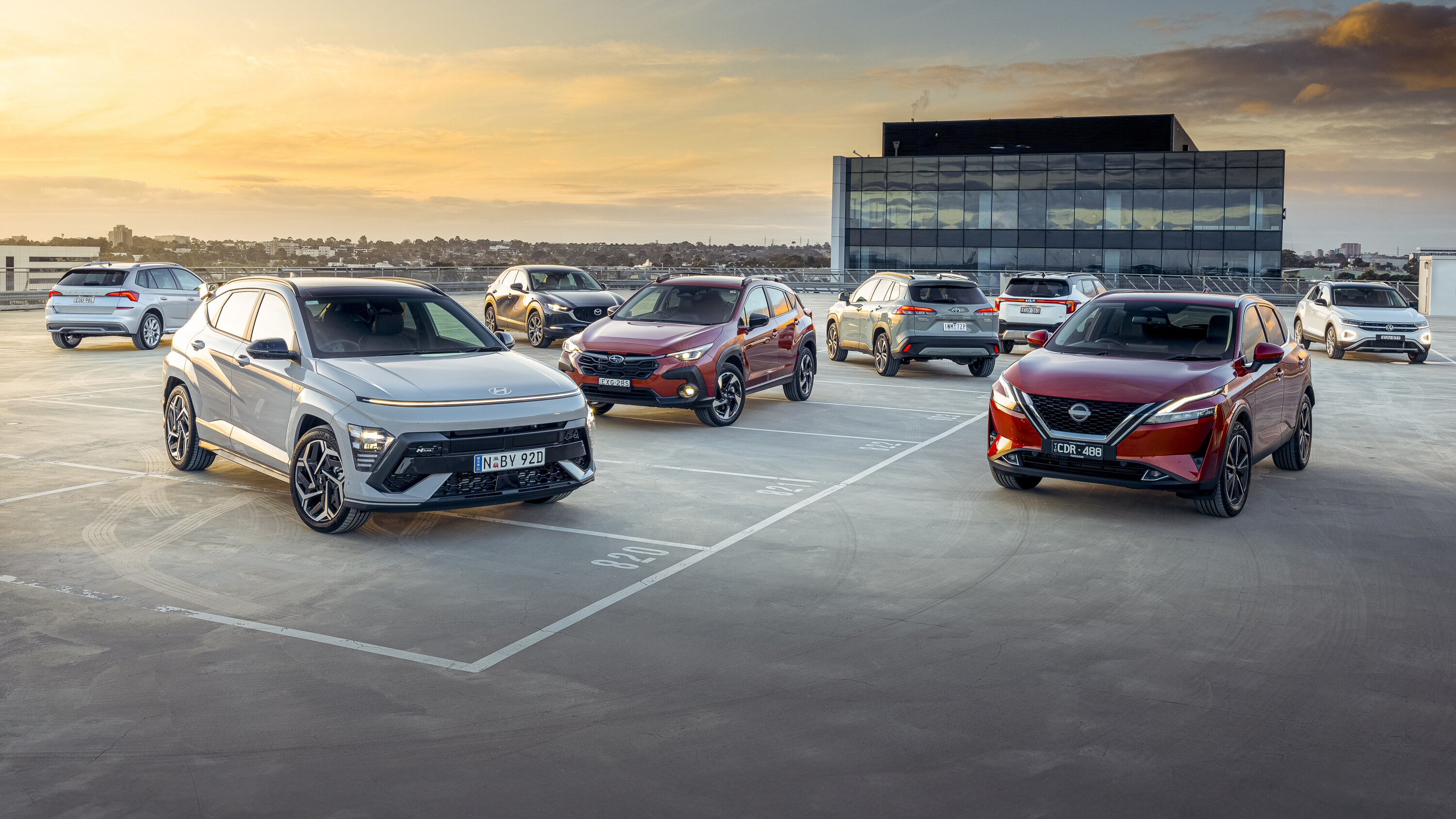
Bringing up the rear is the 110kW, 1.4-litre turbo inline-4 Volkswagen T-Roc 110TSI Style.
At $37,100, it rivals the Kamiq for outright value and brings loads of standard equipment for the money – and that inimitable German feel.
We’ve omitted one of the most popular vehicles of the segment, the Mitsubishi ASX, because this is a test of best small SUV, not best-selling… while, for us, the jury is out on the popular new Chery Omoda 5 as active safety features such as its Lane Keep Assist feel, well, unfinished.
With all that out of the way, let’s see which small SUVs can hang their heads tallest – and which need to duck.
JUMP AHEAD
8. Kia Seltos GT-Line AWD (7.0/10)
7. Nissan Qashqai ST-L (7.0/10)
6. Subaru Crosstrek S (7.5/10)
5. Mazda CX-30 G25 Astina AWD (7.5/10)
4. Toyota Corolla Cross Atmos Hybrid 2WD (8.0/10)
3. ? Skoda Kamiq Style 85 TSI (8.0/10)
2. ? Hyundai Kona Premium N-Line 1.6T AWD (8.5/10)
1. ? Volkswagen T-Roc 110 TSI Style (8.5/10)
COUNTDOWN
Here’s the rundown on our eight contenders and how they placed, ranked from eighth to first, least compelling to best buy.

8️⃣ Kia Seltos GT-Line AWD: 7.0/10
Space and loads of equipment can’t make up for a lack of refinement and hefty thirst
?️ Alex Inwood
Things we like
- Loads of standard equipment and desirable luxuries
- Spacious and comfortable cabin
- Rear seat and boot are roomy and loaded with amenity
Not so much…
- Heavy fuel use
- Ride & handling not as cohesive as others on test
- 1.6Tu2019s short service intervals and high servicing costs
- Cabin materials and quality lag behind rivals
| Kia Seltos AWD GT-Line | |
|---|---|
| Price | $44,900 |
| Engine | 1.6L 4cyl turbo |
| Power/torque | 146kW/265Nm |
| Gearbox | 8-speed auto |
| Economy claimed/tested | 7.4L/10.4L |
| Drive | AWD |
| Boot size | 433L/1393L |
| Weight | 1495kg (tare) |
| Warranty | 7yr/unlimited |
| Servicing | 12 months/10,000km |
| 5yr service costs | $2808 |
| Fuel | 91 RON/E10 |
| L/W/H/WB | 4385/1800/1635/2630 |
Once the shining star of the small SUV segment, it might be a touch surprising to find the Kia Seltos as our last place finisher.
Kia’s small SUV has long been easy to recommend thanks to its desirable blend of cabin space, high equipment levels, a long 7-year warranty and punchy 1.6L turbo/AWD combo, so how has it found itself at the bottom of this pack?
The answer is a simple as it is predictable: progress. Newer rivals have swamped the once segment-leading Kia, with alternatives like the VW T-Roc and fresh Hyundai Kona now gazumping the Seltos for dynamic cohesion and powertrain polish, as well as for cabin quality, tech and connectivity.
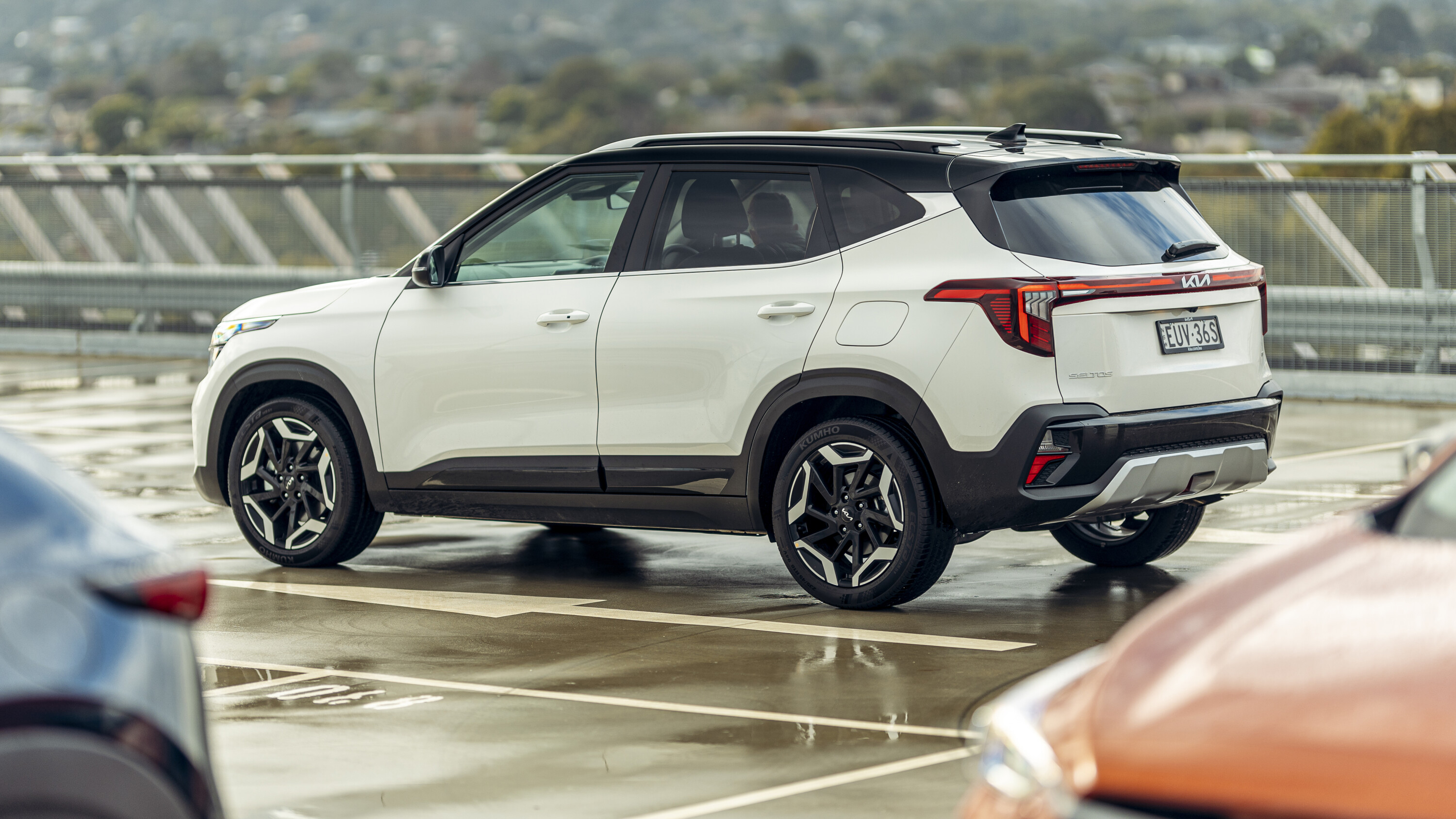
But while the Seltos’s shine may have dimmed slightly, its core goodness remains.
Plus, Kia did treat the Seltos to a worthwhile mid-life update at the end of 2022 which brought a fresh 1.6-litre turbo/8-speed auto combo (now shared with the new Kona), standard rear-air vents and an improved safety suite.
Value continues to be a core Seltos attraction. Our test car is the flagship GT-Line AWD which, although one of our pricier contenders at $44,900 before on-road costs, is bursting with standard equipment.
18-inch alloys, LED headlights, a show-stopping full-width digital display, head-up display, heated/ventilated front seats, a heated steering and heated second-row seats are all included. As is an interior design that still holds its own compared with fresher competitors.

Dominated by the sweeping widescreen digital display, the button-heavy cabin layout features sound ergonomics, a sporty flat-bottom steering wheel with perforated grips and a sound level of connectivity thanks to a wireless charging pad, twin USB ports for both rows of seats and wired Apple CarPlay/Android Auto.
It’s only when you start poke and prod the cabin that you realise the quality isn’t up to the same standard as other SUVs here. Hard, scratchy plastics are easily found – including on the front doors which is a surprise in a range-topping model – and there’s a heavy use of piano-black plastic which scratches easily and attracts fingerprints.
Storage is adequate rather than excellent, too, with twin central cupholders, a small lidded bin and averagely sized door pockets feeling decidedly subpar when compared with the Seltos’s newer Korean cousin, the Hyundai Kona.

A power tailgate is standard and in terms off outright litreage, the GT-Line offers 433L of luggage capacity
The back seat is one of the best of this group, however. Boasting ample knee- and headroom for 6ft adults, the GT-Line also includes heated outboard rear seats, decently sized door bins, a centre armrest with twin cupholders and dedicated air vents.
Boot space is a bit of a mixed bag. A power tailgate is standard and in terms off outright litreage, the GT-Line offers 433L of luggage capacity, which trails only the 445L T-Roc for load-lugging ability. A full-size spare is also fitted (hooray!) but its inclusion means you can’t drop the boot floor onto the lower of its two levels, which reduces the available space. There are no bag hooks, either.
Things are equally hit and miss when it comes to how the Seltos drives. While the GT-Line trim level brings a sporty flavour and a ride/handling balance that mostly strikes a decent balance between comfort and control, heavier than average steering is a sniff cumbersome in tight carparks and road noise can also be an intrusive companion on corse chip surfaces.
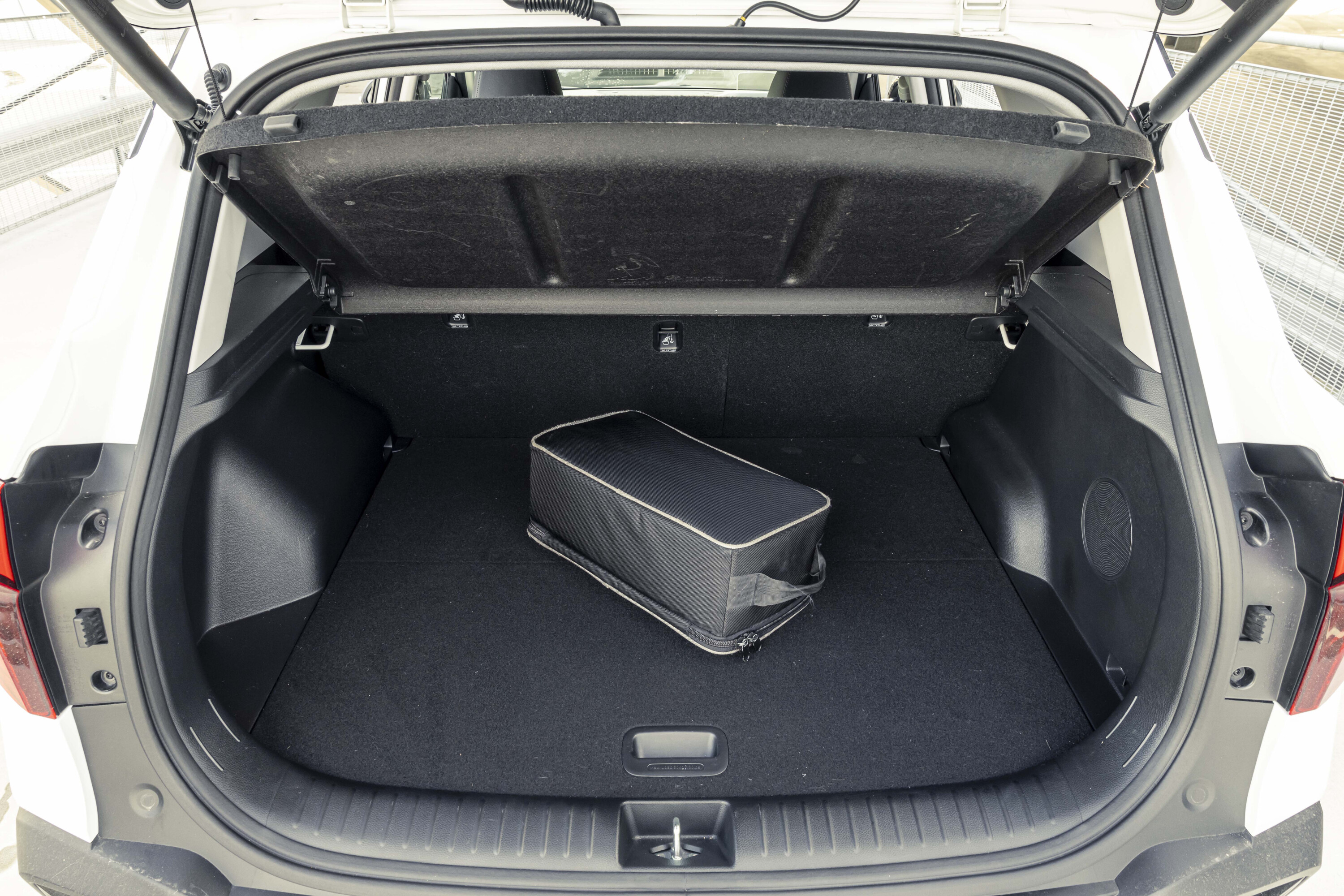
And while the 1.6-litre turbo petrol is impressively gutsy, it’s also thirsty (only the Kona, which uses the same engine, drank more) and suffers from noticeable rev hang after you lift off the throttle.
Its 10,000km servicing intervals are short, too, and the Seltos is also one of the most expensive of this group to service over five years. The good news is that switching to a smooth-shifting eight-speed auto rather than the pre-facelift’s dual-clutch brings a big improvement in everyday driving.
Buying a Seltos in 2023 brings a few caveats, then, but if lots of standard equipment, punchy turbo performance and a roomy cabin and big boot are high priorities, Kia’s handsome small SUV remains a well-rounded machine.
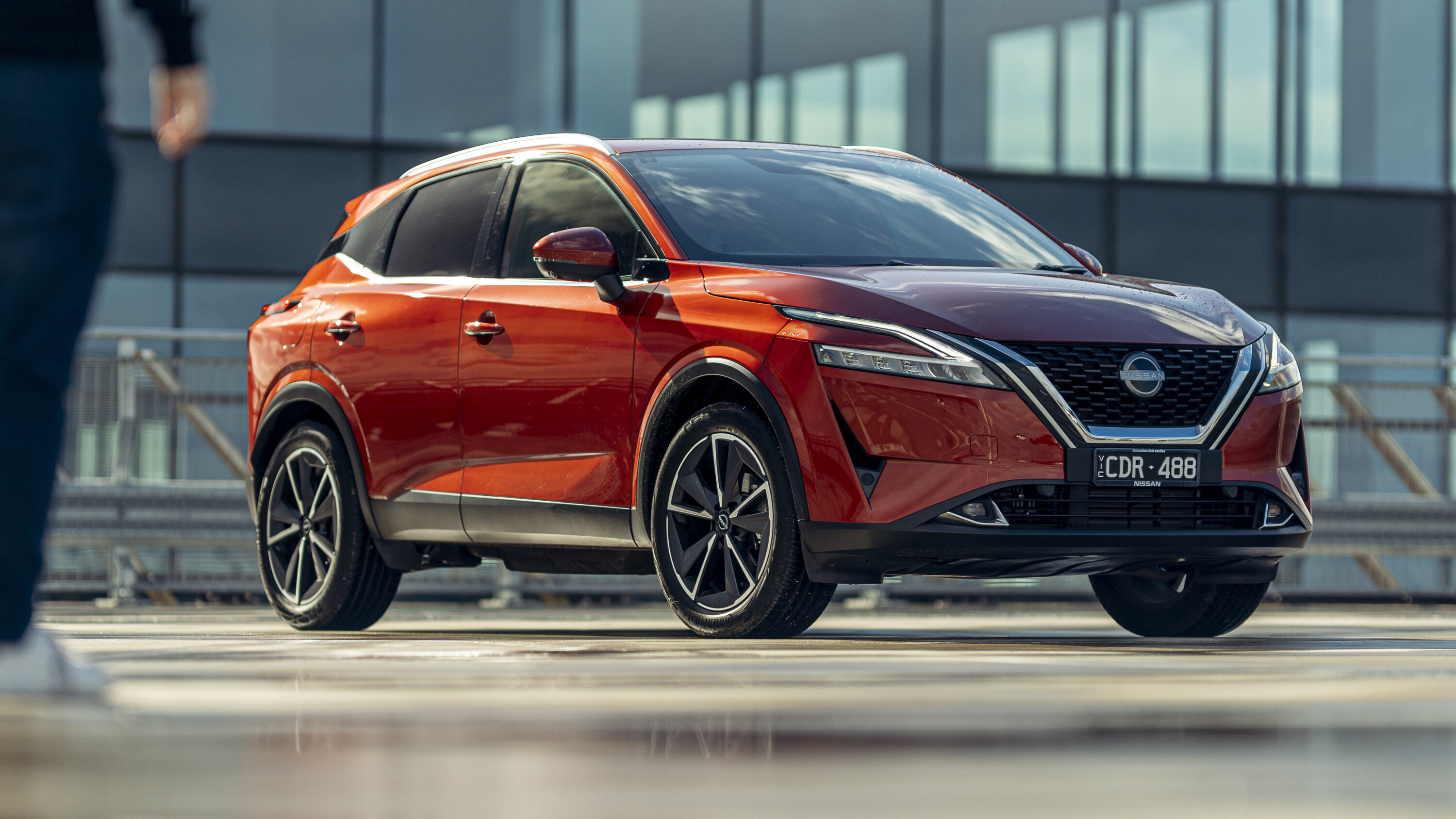
7️⃣ Nissan Qashqai ST-L: 7.0/10
Sometimes, you don’t quite get what you pay for
?️ Tony O’Kane
Things we like
- Rear cabin access
- Generally high build quality
- Design
Not so much…
- High RRP for a FWD small SUV with these specs
- ride quality
- Highest ownerships costs
| Nissan Qashqai ST-L | |
|---|---|
| Price | $42,190 |
| Engine | 1.3L 4cyl turbo |
| Power/torque | 110kW/250Nm |
| Gearbox | CVT |
| Economy claimed/tested | 6.1L/7.5L |
| Drive | FWD |
| Boot size | 429L/1425L |
| Weight | 1482kg |
| Warranty | 5yr/unlimited |
| Servicing | 12 months/15,000km |
| 5yr service costs | $2916 |
| Fuel | 95 RON |
| L/W/H/WB | 4425/1835/1625/2665 |
In isolation, the Qashqai ST-L is a likeable thing.
Sure, there’s no choice of all-wheel drive and a hybrid powertrain has still yet to join the local line-up, but its sharp design, high quality interior and perky 1.3L turbo engine make it a compelling choice in the product-saturated small SUV segment.
Unfortunately, it fails to excel in this crowd. Consistently low performance across the various assessment criteria sees it relegated to seventh-place overall, its high servicing costs in particular putting it well behind the rest of the group (at $2916 over 5 years, it’s the most expensive of these to service, while the next service outside of this period costs a whopping $1100).
It was also judged second-last for dynamics and comfort. Its pointy front end offers some driver-engagement factor, and despite being a bum-dragger by default it is commendably grippy on damp pavement via its Continental rubber.
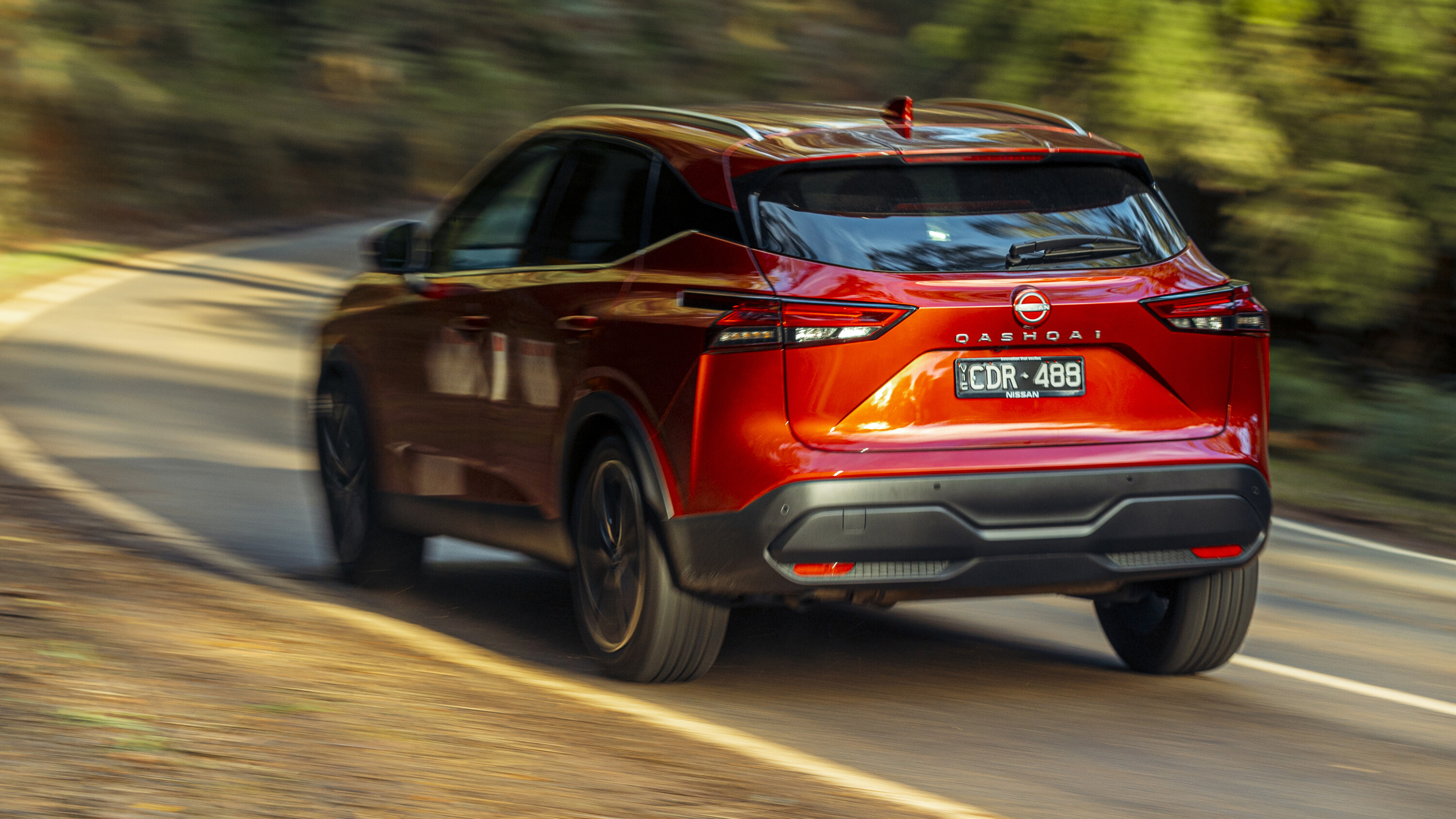
But ride quality on the attractive 19-inch alloy wheels doesn’t provide the suppleness required for daily-driver duty.
Those rollers slap over expansion gaps and don’t deliver enough compliance over potholes and other sharp-edged road features, but hey, ask anyone with a predilection for stilettos and they’ll tell you that there’s a price to be paid for wearing good-looking shoes: comfort.
Speaking of comfort, poor under-thigh support for the back seat also harmed its cabin comfort score to a great degree. For children and other short-legged folk, it’ll arguably be fine.
For adults, the cushioning puts too much weight on your glutes and thus limits its long-distance comfort. The seat spec is good though: heated front seats and a heated steering wheel are standard on the ST-L grade, as is an 8-way power-adjustable driver’s seat (the passenger’s pew is only manual).
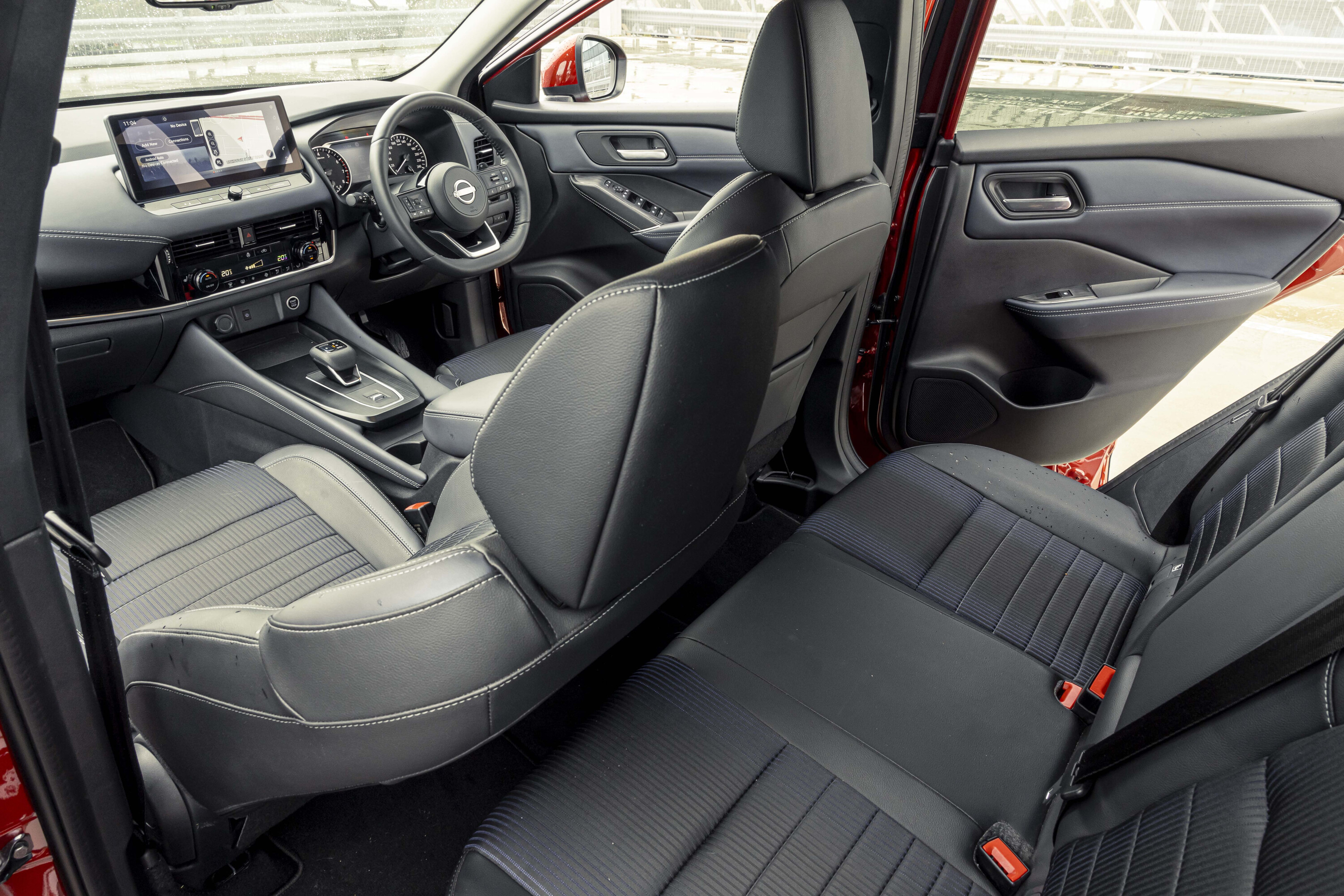
Quality-wise, there are a couple of missteps.
For one, a discolouration of the Park button on the gear selector that appears to be a common fault on Nissan’s newly-adopted puck-style transmission interface. Another is a spongy feel to the upper half of the steering wheel volume rocker switch, which again is something that’s been observed in multiple Nissans.
They’re minor issues, but their reappearance suggests Nissan needs to have a word with its suppliers about quality control. It’s a shame, since their presence takes some of the shine off what is otherwise a very nicely made and presented cabin – we like the deep pearl blue vinyl trim on the dash and door cards, the soft-touch uppers, the padded centre console trims, the nicely textured gearshift surround and the dual-level centre console box.
At the ST-L grade, the Qashqai gains a wireless phone charge pad and features a bright and clear 12.3-inch infotainment display that’s intuitive to use, boasts built-in nav, and integrates well with Android Auto and Apple CarPlay – albeit via a wired connection.

There’s also the ultra-wide opening angle of the rear doors, thanks to cast metal hinges and geometry that’s similar to what’s used by the Qashqai’s bigger brother, the X-Trail.
At 429 litres of seats-up storage space the Qashqai had the third-biggest boot on test, but the ST-L misses out on the reconfigurable floor system of the top-shelf Ti, which is a shame because it leaves a massive step between the actual boot floor and the backrests when the rear seats are folded down. A pair of shopping bag hooks and a 12V outlet are a nice plus, though.
Efficiency was where the Qashqai performed best, with its 7.45L/100km on-test average putting it fourth out of eight for fuel burn.
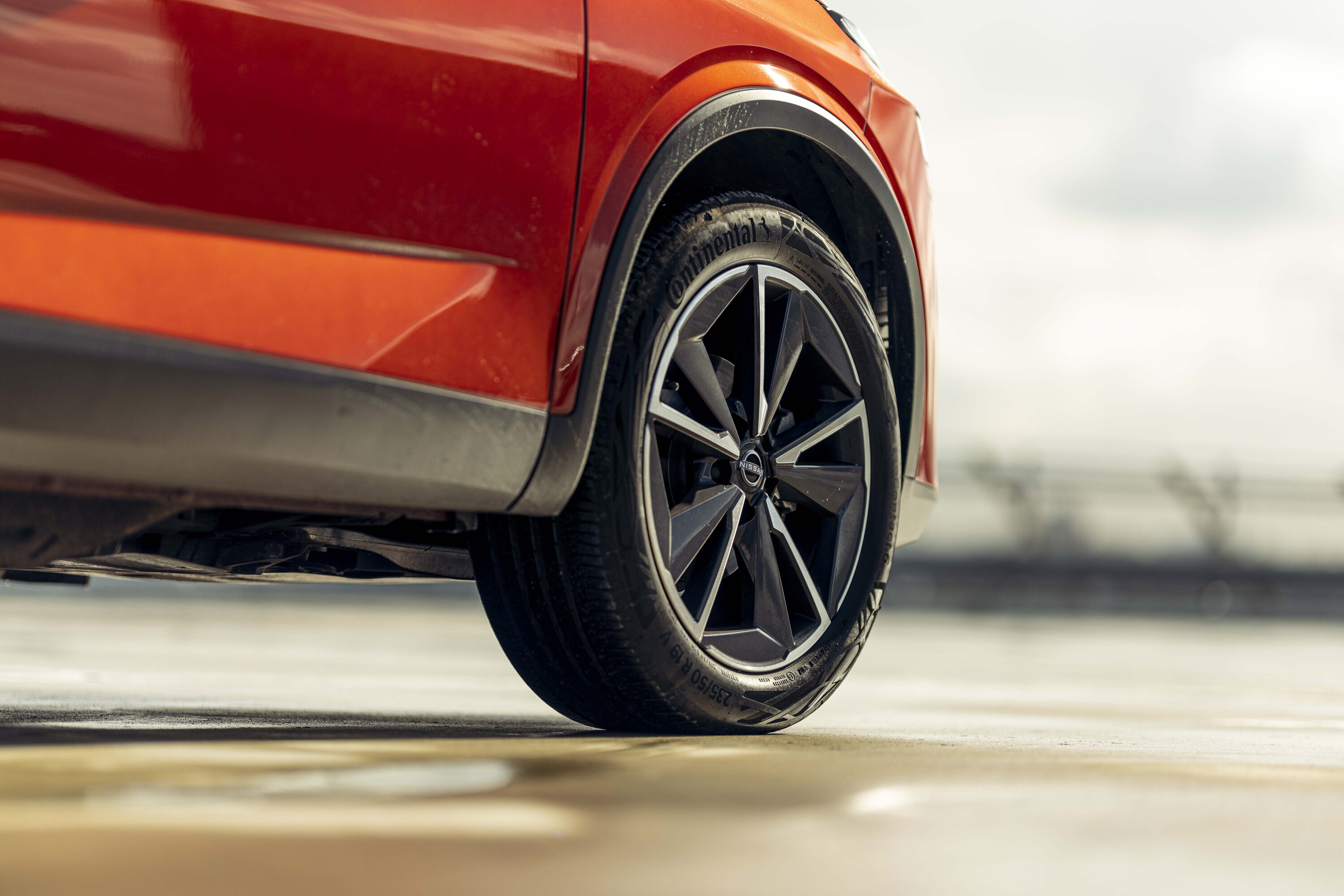
That being said, the T-Roc, which boasts identical outputs of 110kW and 250Nm, is also a front-driver, and weighs just 85kg less than the Nissan, recorded a 6.58L/100km result on the same test loop.
Driveability is generally good, however the CVT calibration can feel a touch dozy in its default mode – better to flick it over to sport if you want to exploit the 1.3L turbo’s respectable torque output to its fullest.
The Qashqai commits no egregious crimes. Were it not for a comparatively high retail sticker versus the other front-drivers and eye-watering maintenance costs, it arguably would have placed higher.
6️⃣ Subaru Crosstrek S: 7.5/10
It has a tiny boot and could use more power, but the ride and handling is something else
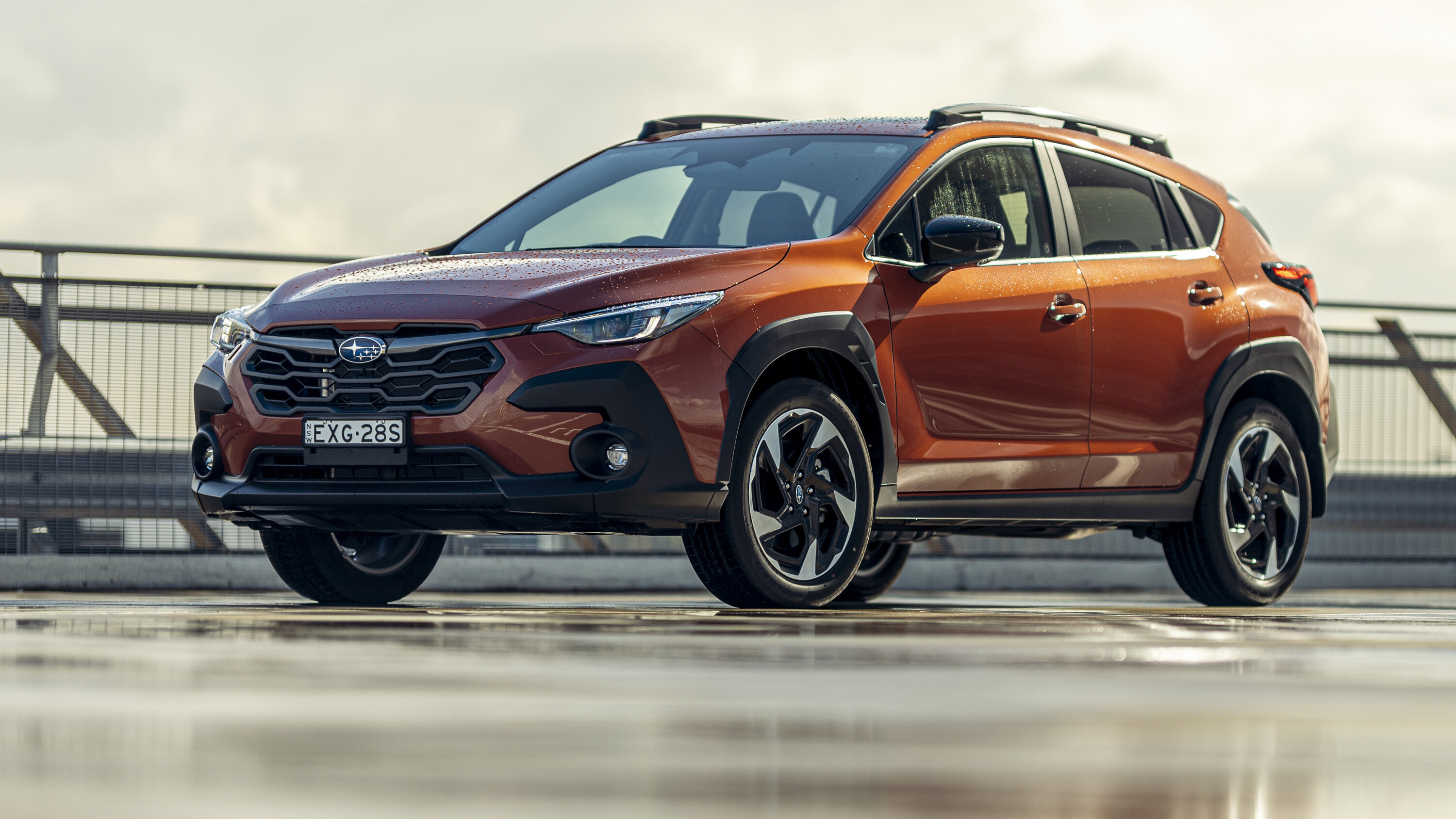
?️ Dylan Campbell
Things we like
- Superb ride
- Excellent dynamics
- Impressive refinement
- Apple CarPlay integration
Not so much…
- Feels a bit gutless
- Tiny boot
- No rear air-vents
- Pricey to service
| Subaru Crosstrek S | |
|---|---|
| Price | $41,490 |
| Engine | 2.0L 4cyl boxer |
| Power/torque | 115kW/196Nm |
| Gearbox | CVT |
| Economy claimed/tested | 7.2L/10.0L |
| Drive | AWD |
| Boot size | 291L/XXX |
| Weight | 1493kg (tare) |
| Warranty | 5yr/unlimited |
| Servicing | 12 months/15,000km |
| 5yr service costs | $2371 |
| Fuel | 91 RON |
| L/W/H/WB | 4495/1800/1600/2670 |
The Subaru Crosstrek is one of the nicest cars in its class to drive, although it makes you ‘pay for it’ with an oddly small boot and other omissions like no rear-seat air vents. At all.
Replacing the old XV, the newly named, ruggedly styled Crosstrek is basically an Impreza with higher suspension and different styling. It sits on the same platform, uses a 2.0-litre naturally aspirated “boxer” engine, all-wheel-drive and a CVT automatic transmission.
Inside, it’s a very practical, functional and sensible place to be – if not as stylish as European rivals such as Volkswagen and Skoda, or even Japanese alternatives such as Mazda. The Crosstrek S we tested has leather-accented seats giving it a comfortable vibe, although it has a tough and resilient feel like one of those Otterbox phone cases.
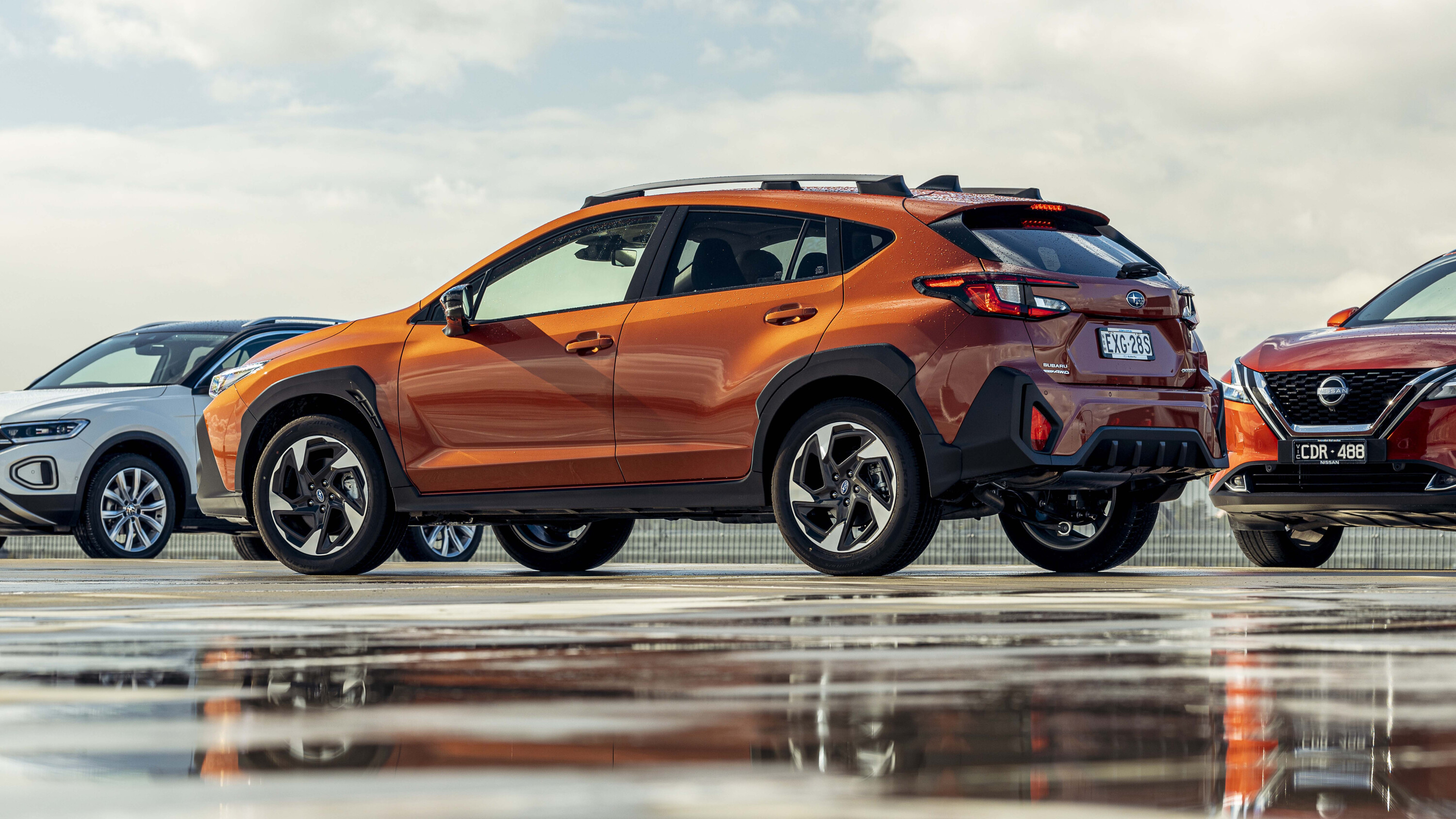
A tall, portrait-orientated 11.6-inch infotainment touchscreen gives it a modern feel – and integrates Apple CarPlay well – although notably for a top-spec grade, the S only has a 4.2-inch digital display in its partly analogue instruments.
There isn’t the larger, wholly digital displays you’ll find in rival vehicles.
At $41,490 before on-road costs, the Crosstrek S brings lots of must-haves such as wireless Apple CarPlay and Android Auto, a wireless phone charger, electric front driver’s seat (manual passenger) and an impressive active safety suite, which we’ll get to shortly.
There’s also a hybrid model costing $45,090 which adds a small, 12kW/66Nm electric motor and brings fuel economy of 6.5L/100km – down from this non-hybrid model’s 7.2L/100km (both claimed figures by Subaru).
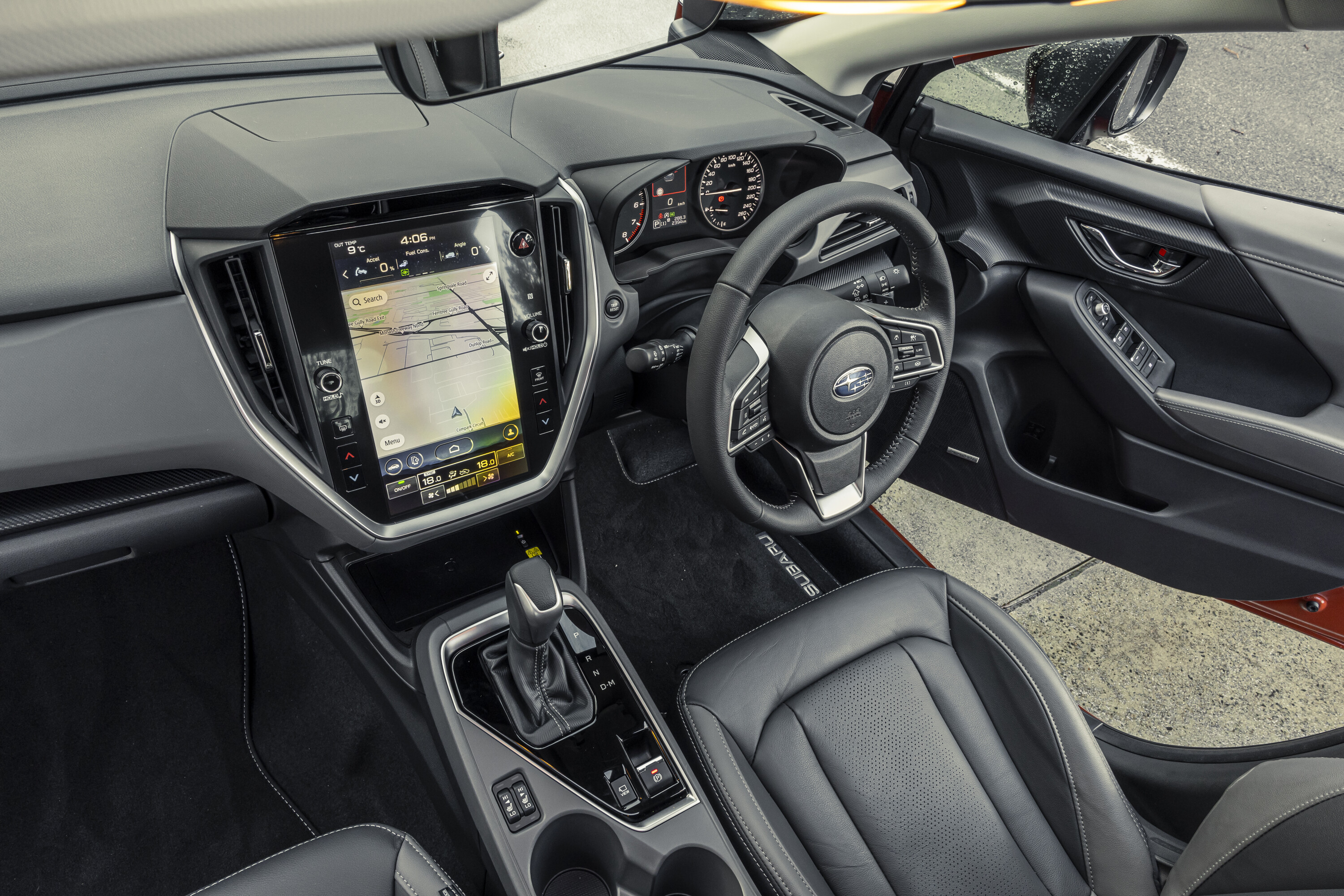
In the back seat, there are two ISOFIX mounting points for baby seats while for adults there’s ample knee room.
There are USB-A and USB-C charging outlets however no air-vents at all, meaning on a hot day your poor kids are a bit short-changed. We test very few vehicles with no rear air-vents these days, so it’s a remarkable omission especially for a supposedly higher grade model.
The boot is also oddly tiny. Subaru has elected to fit a large, space-saver spare wheel but it’s meant raising the boot floor, cutting the boot size to just 291 litres. The hybrid model gets a puncture repair kit and 315 litres. The rear back-rest is a 60/40 split and there’s no ski-port; the second row also doesn’t tilt or slide.

On the plus side, the Crosstrek is exceptionally safe, even by modern standards. It hasn’t been crash-tested by ANCAP, but you could count on it getting five stars.
It has a fatigue-detecting driver attention monitor, a reversing camera with rear-cross traffic alert, adaptive cruise control, blind spot monitoring and a 360-degree top-down parking camera. There is lane keep assist, the autonomous emergency braking (AEB) works at higher inter-urban speeds – a big, fat, green tick from us – and the AEB also works in reverse.
While the Crosstrek’s interior feels more functional than desirable, the way it drives is absolutely something that will delight. Forward visibility is excellent, it’s quiet, the steering is light, fast and direct and the ride quality is as comfortable as some luxury SUVs.
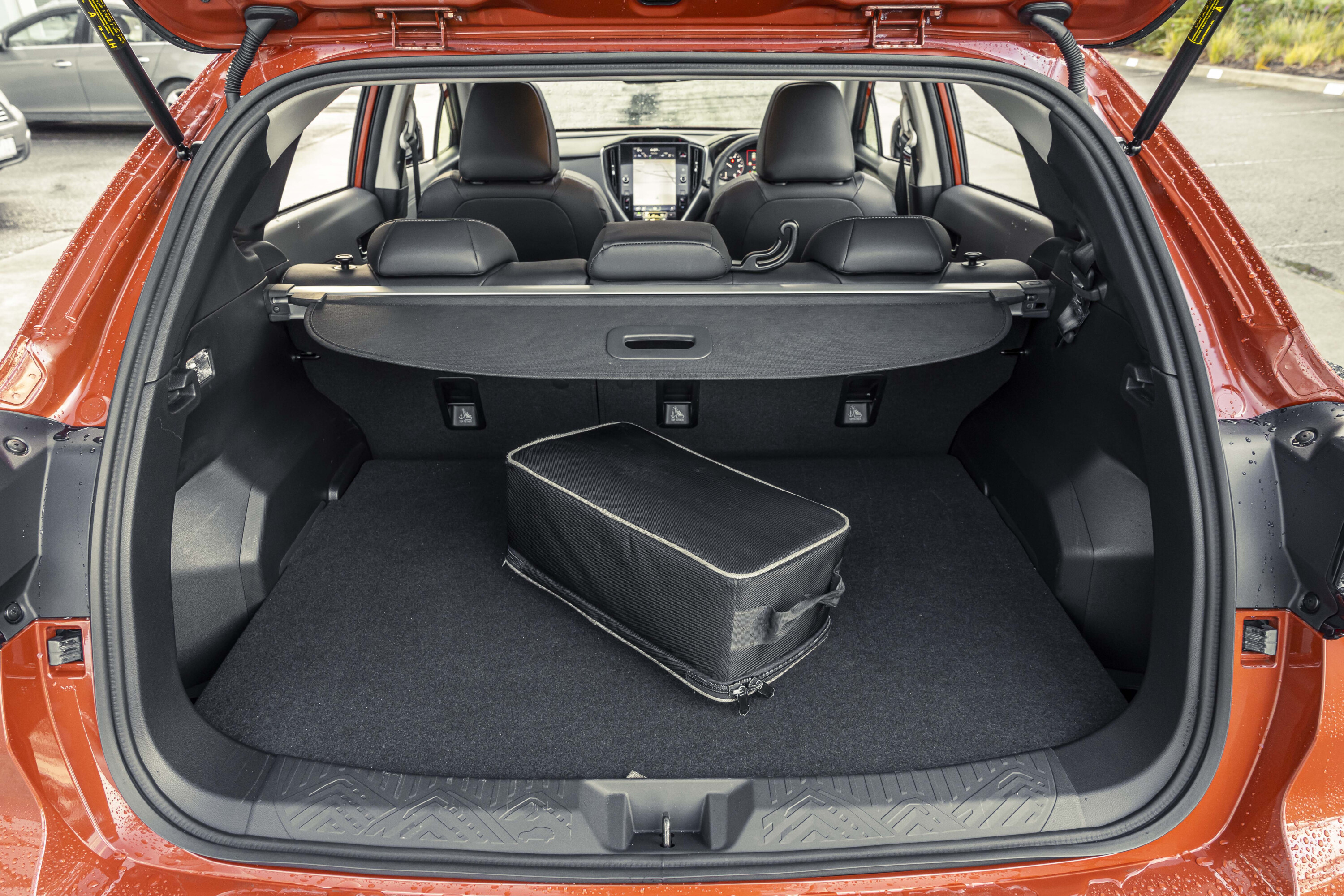
All the controls feel lovely to use, while the handling – thanks to its independent rear suspension and low-lying boxer engine – is best-in-class. Based on this 2.0 S’s handling, a WRX version of the Crosstrek makes absolute sense. Do it, Subaru!
Don’t get us wrong, the Crosstrek could use more power – its 115kW/196Nm means the engine is always working hard, and you’ll be waiting for a nice, long stretch of road to risk any overtaking. But for most, it will be sufficient.
Efficiency is also average compared to rivals. Subaru claims 7.2L/100km using 91RON, but on the plus side a large 63-litre fuel tank gives it a theoretical 800-900km range. We’d also like to see cheaper servicing costs; $2371 over five years is a bit steep. A Corolla Cross is nearly half that.
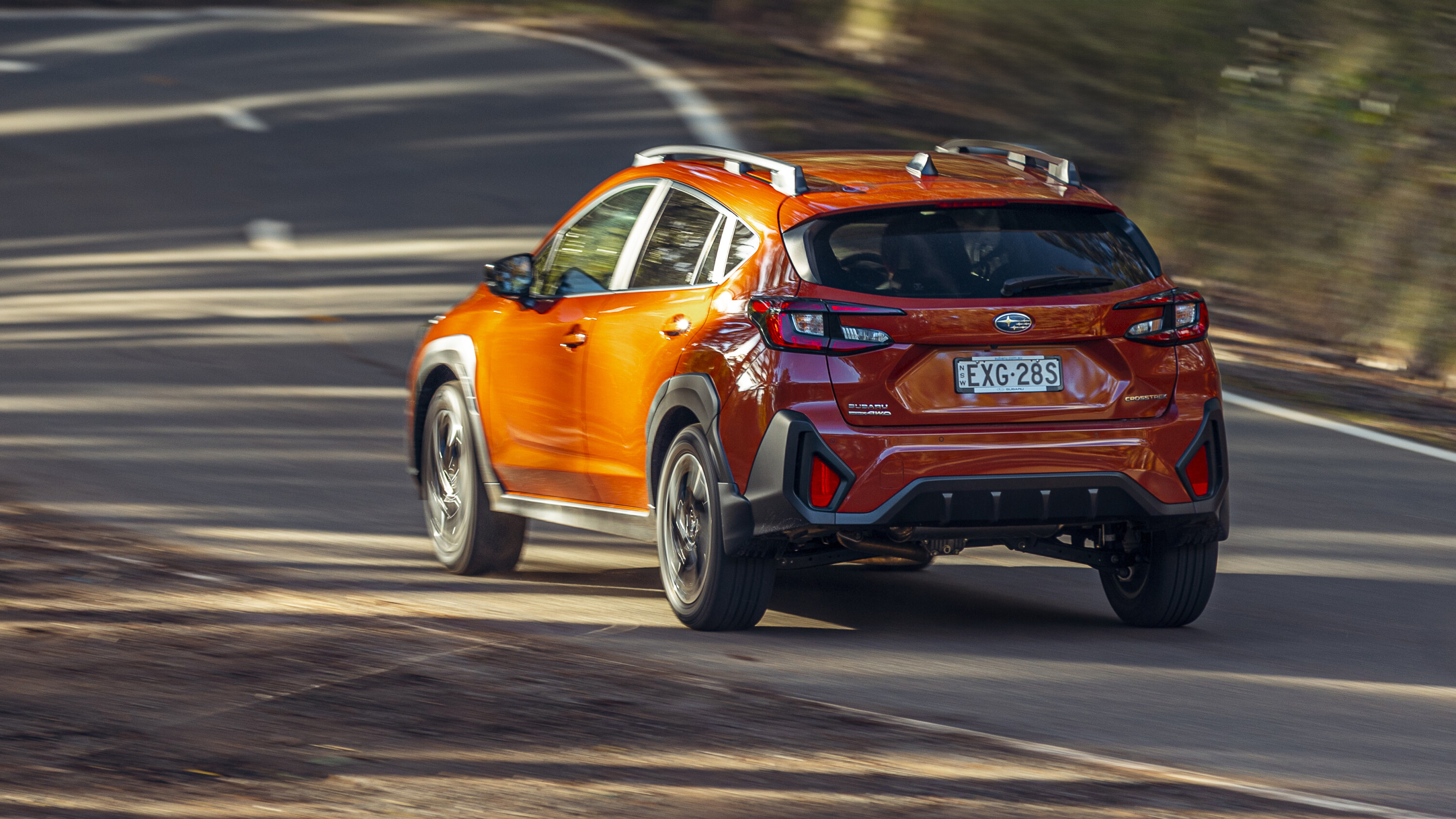
In the final reckoning, we really like the Crosstrek as a driver’s car.
We only want more power because the car could easily handle more, but we were surprised at how small the boot is – and the lack of rear air-vents. No full digital instrument display seems a missed opportunity; and a manual passenger seat seems a bit cheap.
That all said, $41,490 is pretty sharp, the Crosstrek’s engineering feels rock solid, and we don’t doubt it would ever let you down. Plus, we’d almost always look forward to driving it.
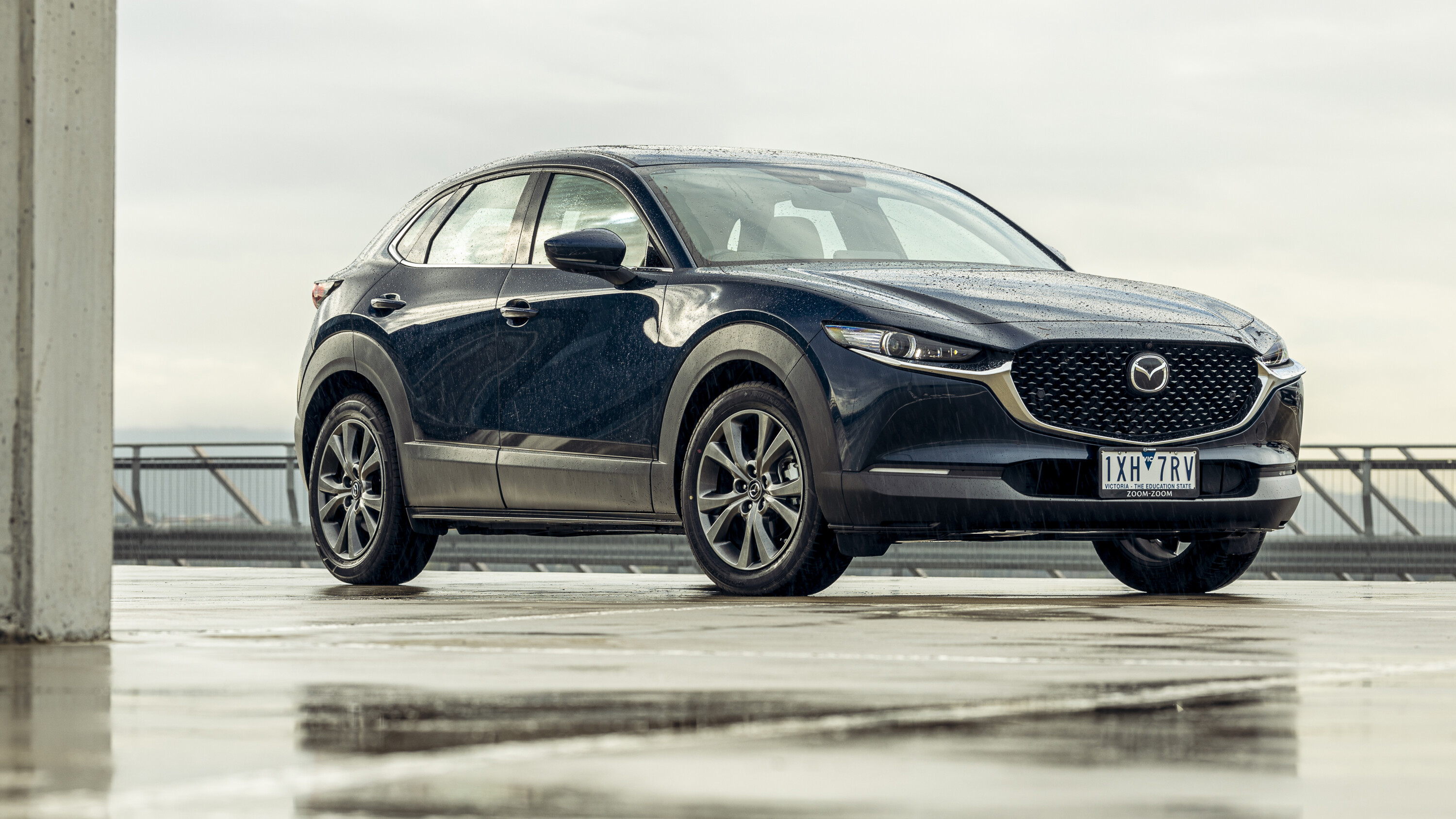
5️⃣ Mazda CX-30 G25 Astina AWD: 7.5/10
Mazda’s small SUV achieves a solid par performance
?️ Tony O’Kane
Things we like
- Great for drivers
- Superb upholstery
- Respectable value
Not so much…
- Infotainment feels rather dated in 2023
- Meagre accommodation for backseaters and luggage
- Pricey to service
| Mazda CX-30 G25 Astina AWD | |
|---|---|
| Price | $45,310 |
| Engine | 2.5L 4cyl |
| Power/torque | 139kW/252Nm |
| Gearbox | 6-speed auto |
| Economy claimed/tested | 6.8L/8.8L |
| Drive | AWD |
| Boot size | 317L/XXX |
| Weight | 1544kg |
| Warranty | 5yr/unlimited |
| Servicing | 12 months/10,000km |
| 5yr service costs | $2187 |
| Fuel | 91 RON/E10 |
| L/W/H/WB | 4395/1795/1540/2655 |
The CX-30 is an extraordinarily balanced thing: for every strong virtue it has, there’s an equally strong demerit to balance it out. Accordingly, its position in the middle of the pack is deserved.
For example: it handles fantastically well. Its direct, feelsome steering and adept suspension egg keen drivers on, and that 139kW/252Nm 2.5-litre atmo engine is zingy, responsive, and meshes very nicely with a lovely six-speed auto and all-paw drivetrain.
Counteracting that is the fact it’s a rather firm-riding thing, with plenty of road noise to contend with. Mazda’s Zoom-Zoom philosophy creates great driver’s cars, but sometimes the general daily liveability factors can suffer as a result.
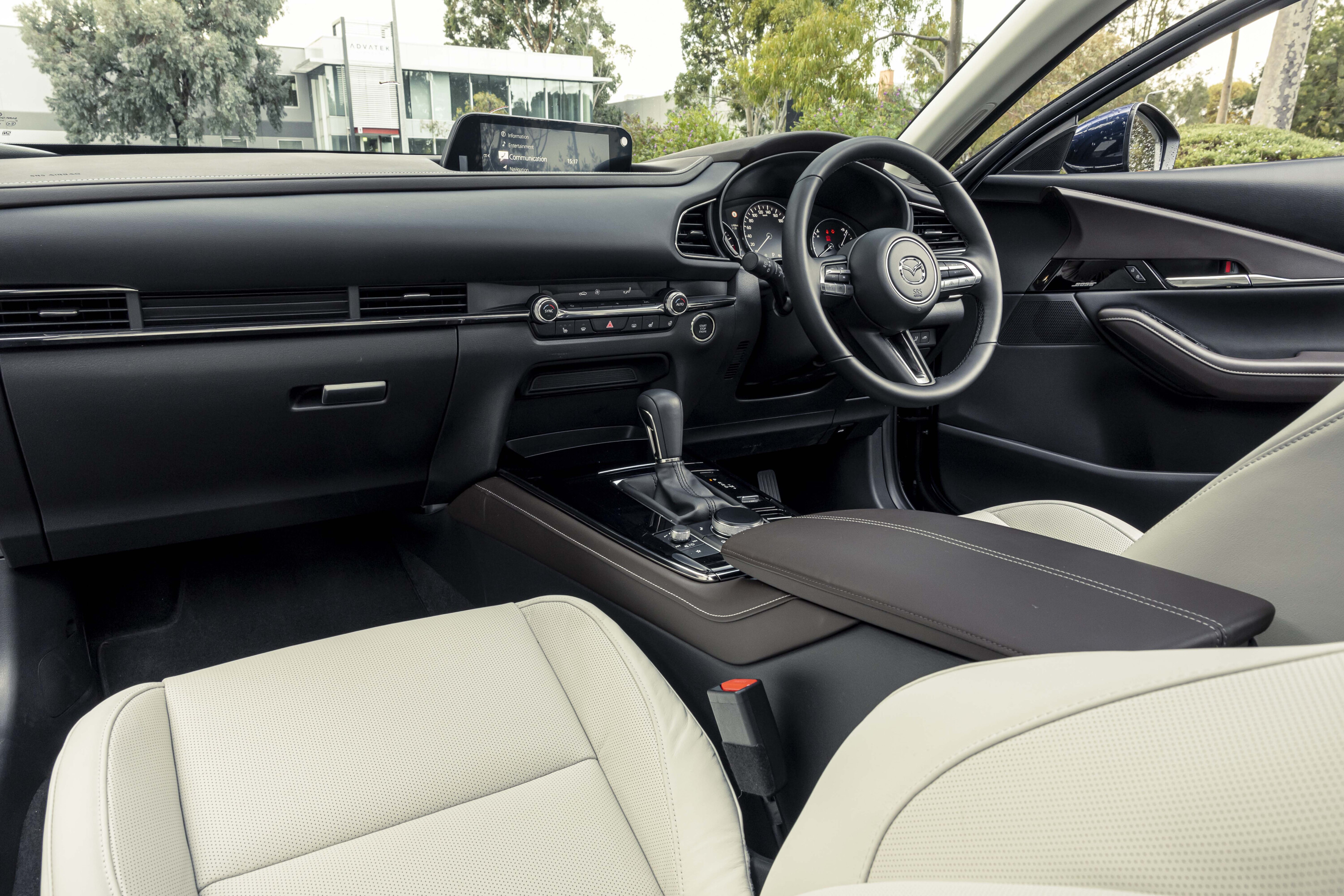
But it must be said that although the CX-30’s naturally aspirated four-cylinder petrol and six-ratio trans might seem a bit old-school in an era of high-boost/low displacement turbos, hybrids and eight-speed autos, it’s a mechanical package that won’t leave anyone wanting.
It’s a likeable combo that gets better the harder you drive it, and it’s perfectly fine with running on regular unleaded too. On the flipside, it’s a pretty thirsty thing: the factory claim is 6.8L/100km on the combined cycle, but our testing returned an average of 8.78L/100km. It was better than the Koreans and the Subaru in that regard, but that’s not an amazing result for an atmo powerplant.
The in-car experience is also a case of give-and-take. The seats themselves are absolutely fantastic, sculpted to fit both torso and legs like a tailored suit and being lovingly upholstered in our Astina-spec tester with creamy white perforated leather.
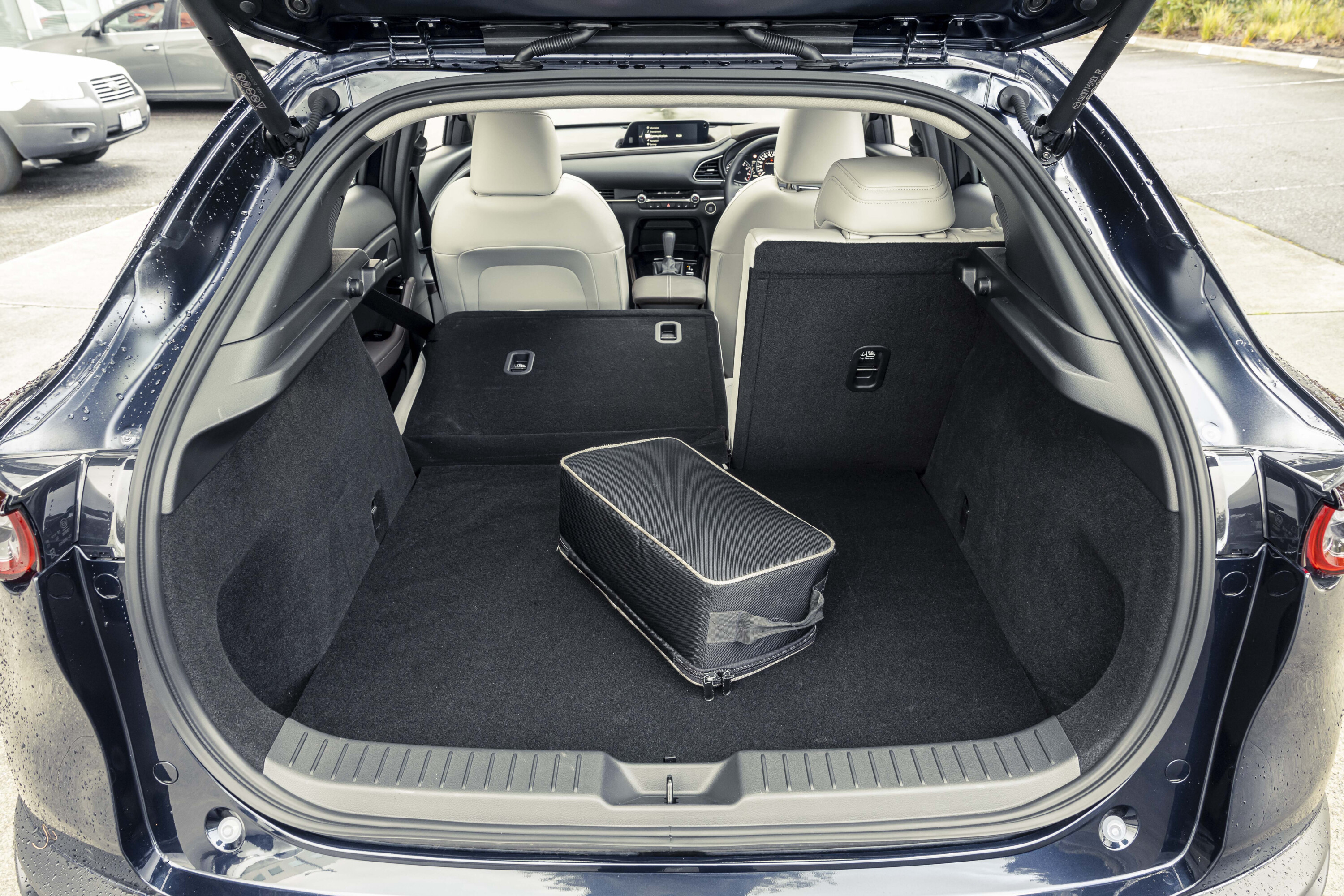
Matched by beautiful brightwork and plenty of soft-touch surfaces throughout (both upholstered and moulded), the only problem is it’s also saddled with the smallest and most difficult-to-use infotainment screen, has the squeeziest back seat and the second-smallest boot.
Head up display? Yes. Wireless phone charging pad? No. The Mazda denies those customers who insist on “having it all”, particularly those who ask for a modern infotainment suite. In this day and age, neglecting that single aspect strikes us as a peculiar strategy.
But it’s those in the back seat who will feel truly shortchanged. While the front offers excellent ergonomics and plenty of space, second-row occupants must deal with a shortage of headroom, significant roof intrusion from the sunroof mechanism and the most limited rear legroom out of the entire field.
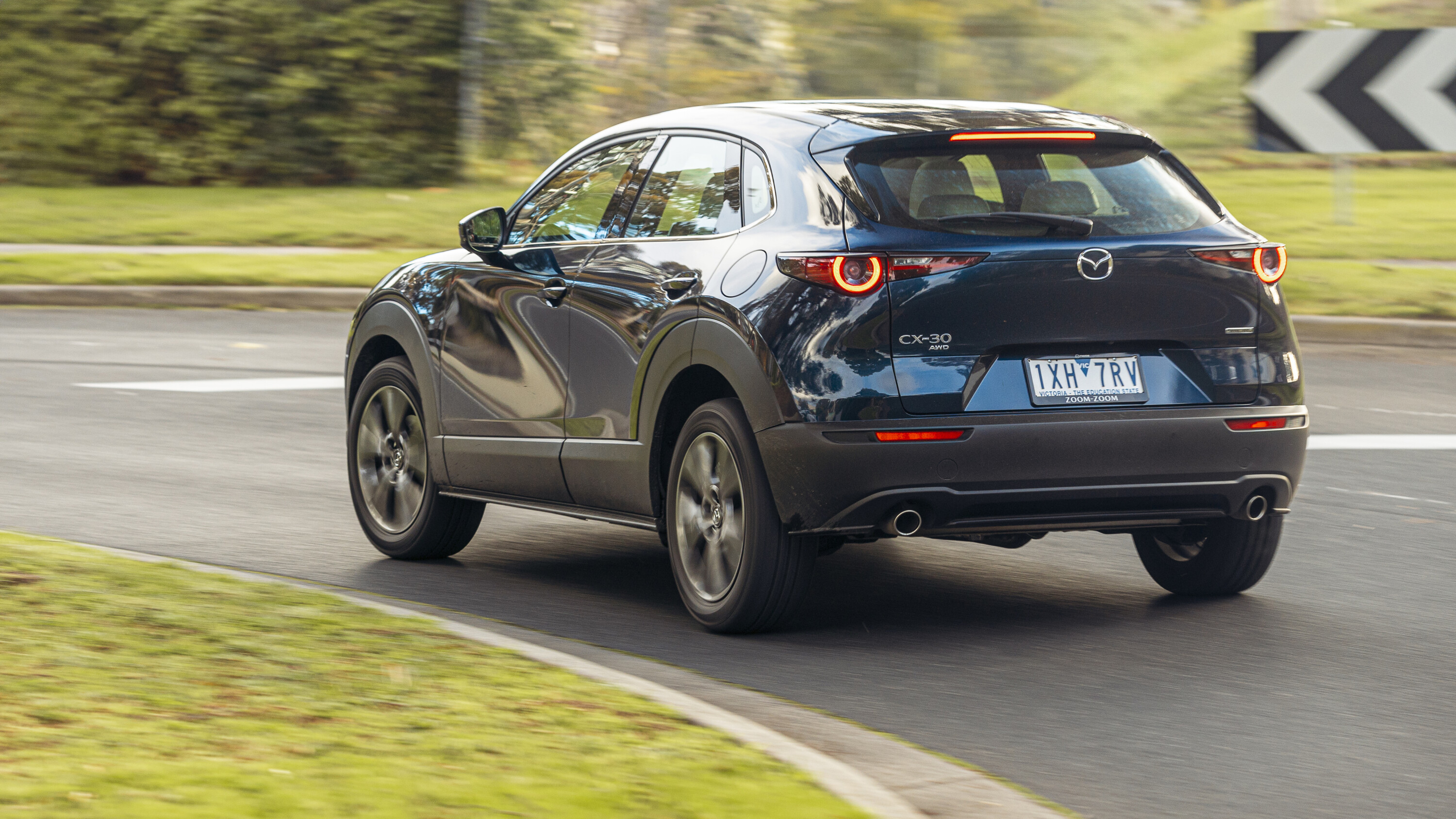
Those intending to cart around other people on a regular basis should look elsewhere, because the Mazda scored last for back seat accommodation by a big margin.
Luggage space is a similar story – it’s tight back there. Not only is the 317-litre boot capacity the second-smallest here, but the loading lip is high, there’s no dual-height floor, it’s rather narrow, there are no bag hooks and there’s no dedicated cargo space under the floor either – just a small air gap above the space saver spare.
The Astina grade scores a powered tailgate, but in all other respects the luggage-carrying capabilities of the CX-30 are disappointing.
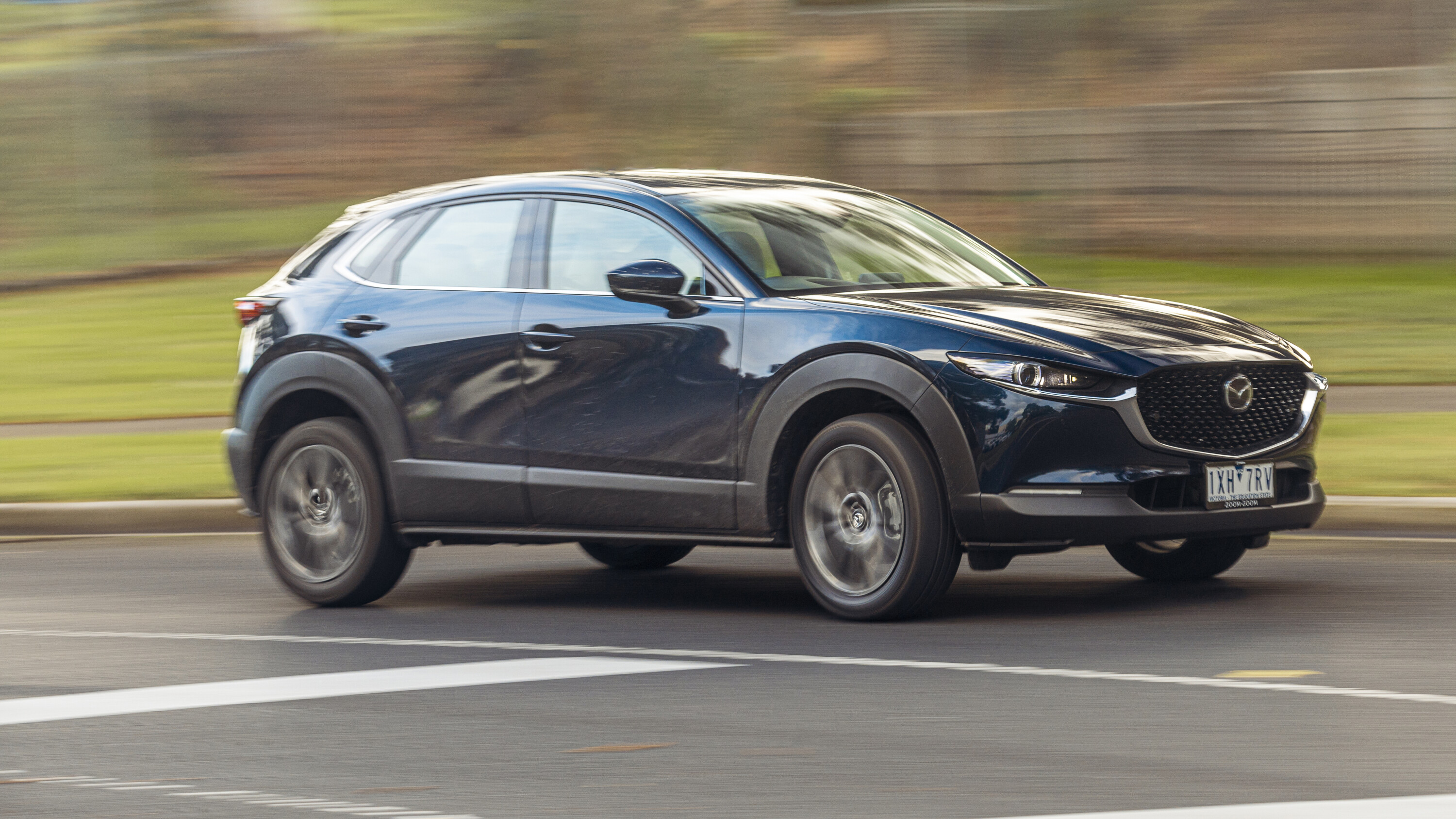
It fared better in ownership costs and overall value, though.
It was the third-cheapest car to maintain for a five year period, and at $45K for a feature-heavy all-wheel-drive small SUV with high levels of build quality, it presents decent value for money as well. It’s just a shame some of those features aren’t as up-to-date as what you’d find in the others.
But nevertheless, the CX-30 Astina presents itself as a connoisseur’s small SUV. An understated Seiko versus the flashy G-Shocks that populate the rest of thus field. Drivers will love it, their passengers maybe not so much. Overall excellence escapes it, but the CX-30 still has plenty of reasons for you to look in its direction.
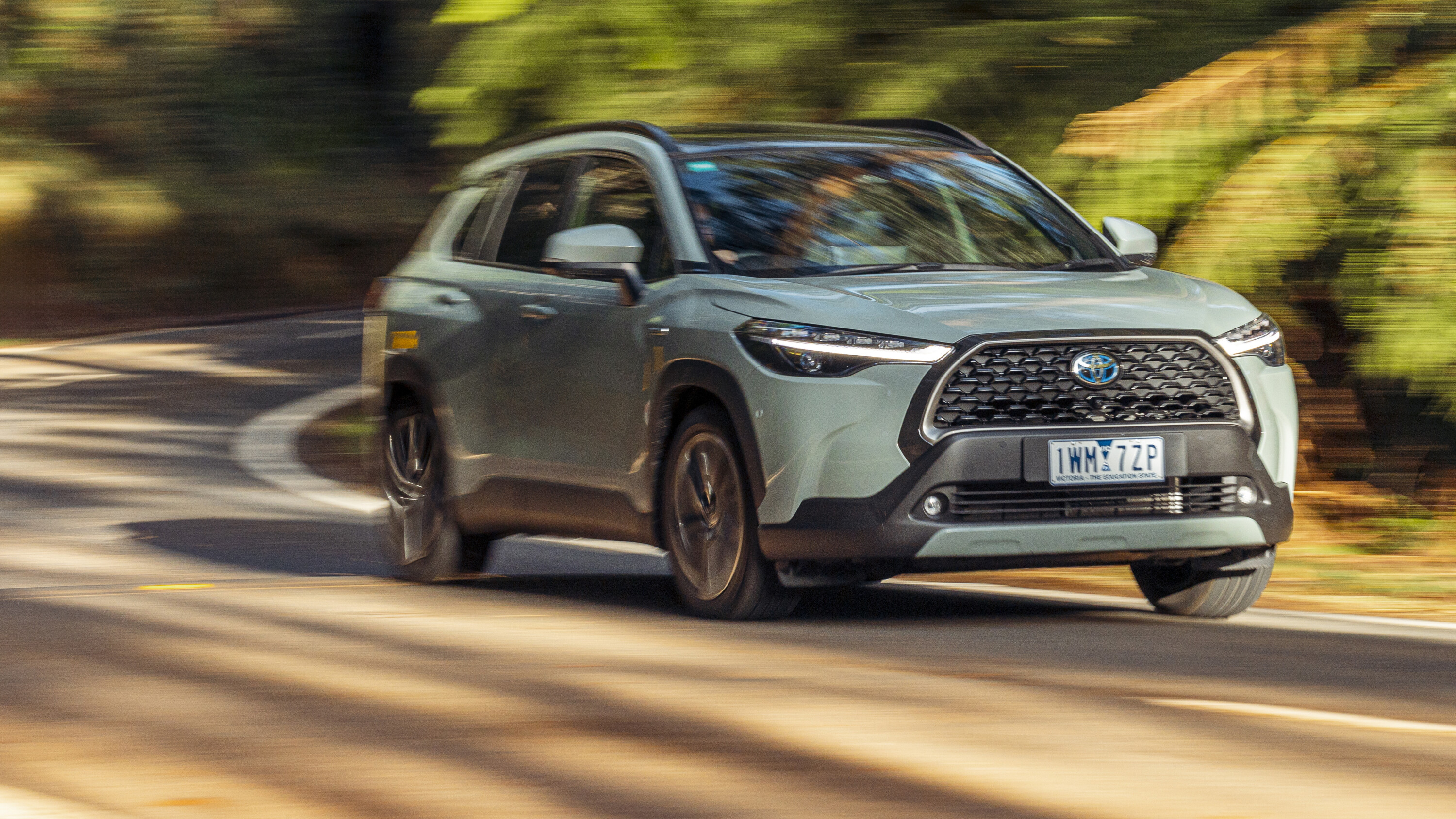
4️⃣ Toyota Corolla Cross Atmos Hybrid 2WD: 8.0/10
Lovely to drive, inoffensive and with fuel efficiency we still can’t quite believe
?️ Dylan Campbell
Things we like
- Outstanding fuel efficiency
- Lovely to drive
- Bright, clear Apple CarPlay
- Cheap to service
Not so much…
- Interior oddly narrow
- Starting to get expensive
- $3K more for AWD
- Limited u201cEV modeu201d
| Toyota Corolla Cross Atmos hybrid 2WD | |
|---|---|
| Price | $46,050 |
| Engine | 2.0L 4cyl + hybrid |
| Power/torque | 146kW/190Nm |
| Gearbox | CVT |
| Economy claimed/tested | 4.3L/6.0L |
| Drive | FWD |
| Boot size | 414L/XXX |
| Weight | 1480kg |
| Warranty | 5yr/unlimited |
| Servicing | 12 months/15,000km |
| 5yr service costs | $1250 |
| Fuel | 91 RON |
| L/W/H/WB | 4460/1825/1620/2460 |
The Toyota Corolla Cross Atmos is the perfect car to recommend to someone who’s likely to complain later if you suggested a dud.
It’s inoffensive, nice to drive, incredibly efficient, cheap to service and unlikely to ever break down.
The Corolla Cross sits between the C-HR and RAV4 SUVs and is a raised version of the much-loved Corolla hatchback. It comes in petrol-only models, or hybrid.
Today we are testing the range-topping Atmos grade in front-drive hybrid spec at $46,050 before on-road costs. For an extra $3000, you can have it in all-wheel-drive with an additional 30kW rear electric motor. We’ll come back to this.
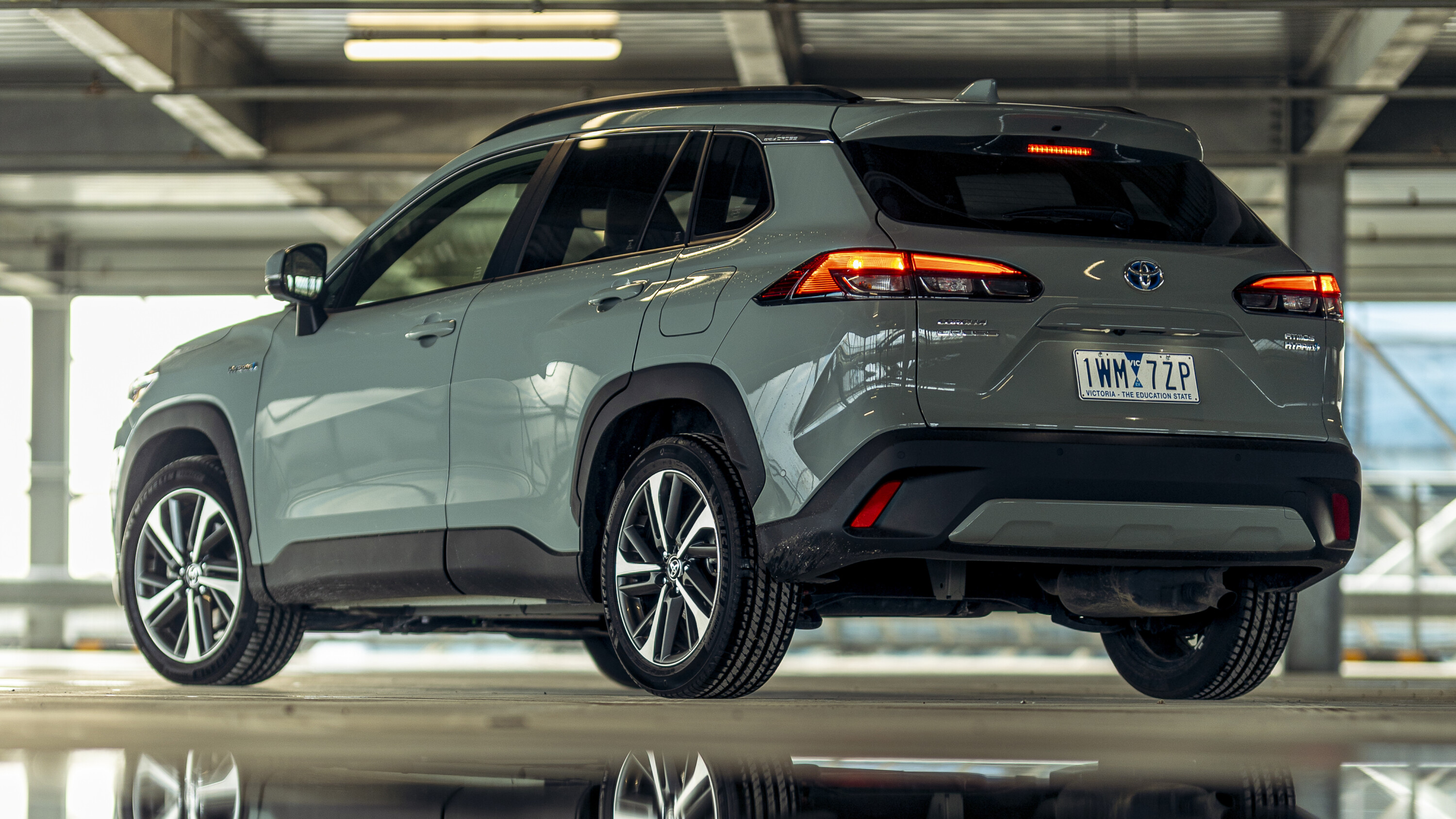
Inside, the Atmos is a lovely place to sit, with a premium-economy vibe.
A 12.0-inch digital instrument display brings a high-tech feel, while a large 10.5-inch infotainment screen is so large, and mounted so high on the dashboard, you almost want to fold it shut, like a laptop. We love how bright and clear Apple CarPlay presents on this huge screen, making the Corolla Cross feel like a seamless extension of your phone.
The Atmos brings all sorts of extra equipment making each day a little bit nicer, such as 360-degree top-down parking view, eight-way power adjustable front seats, heated front seats and steering wheel, and a giant sunroof. There’s also a nicer, nine-speaker JBL audio system and larger 18-inch wheels.
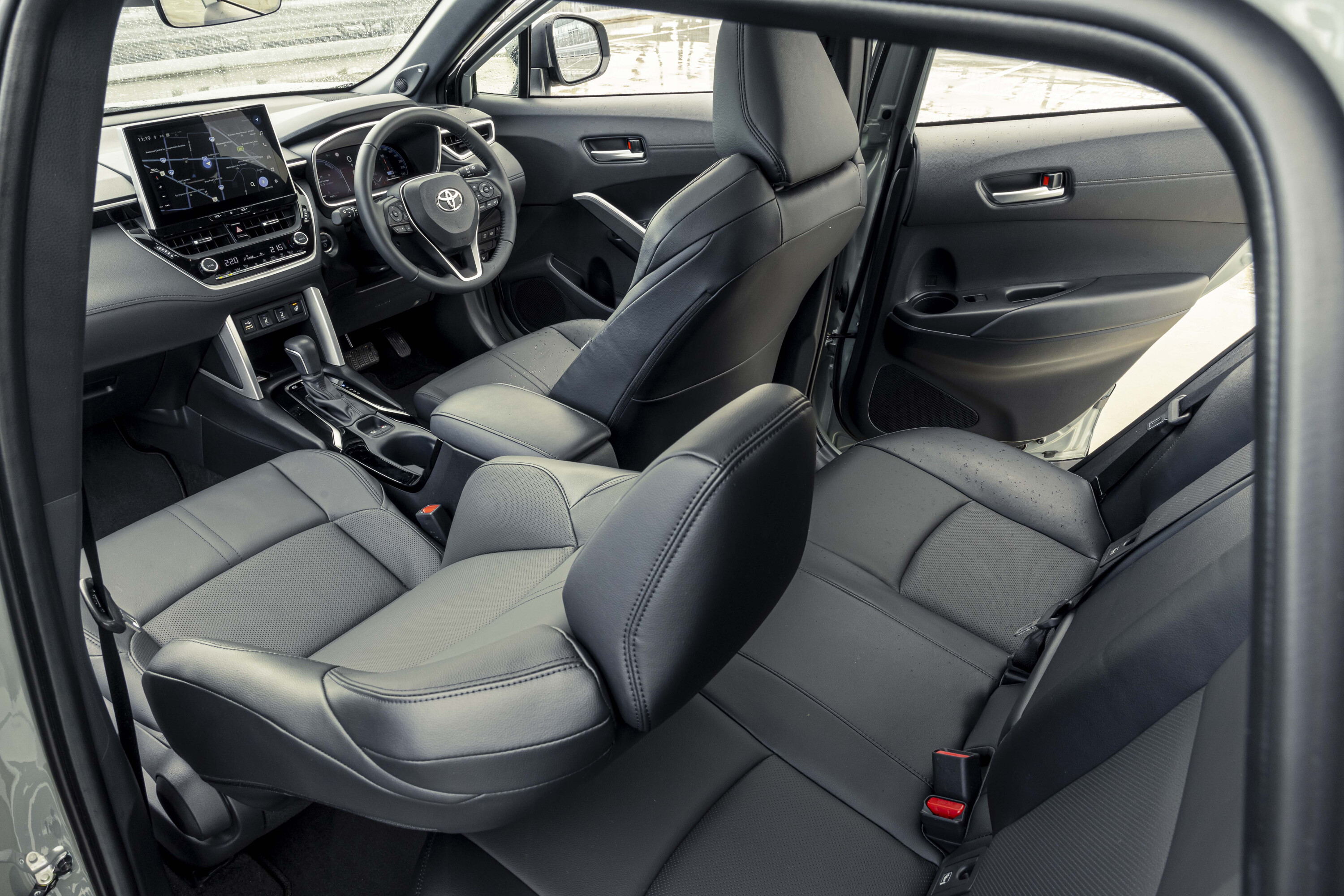
In the back, there are two ISOFIX mounting points for baby seats – even if space would be a little bit tight for three adults (two adults would be fine).
The Corolla Cross is oddly narrow for its size; the front centre console is also quite slim.
The boot is 414 litres, somewhat smaller than a RAV4 (making that the vehicle still to get if you have prams and other things to cart around). It’s also a 60/40 split-fold with no ski-port and notably, the seats don’t fold flat, with quite a pronounced lip. On the plus side, there’s an electric tailgate with foot sensor.
The Corolla Cross is about as safe as modern cars get, scoring five stars in local crash-testing and boasting all the modern active safety systems you could want.
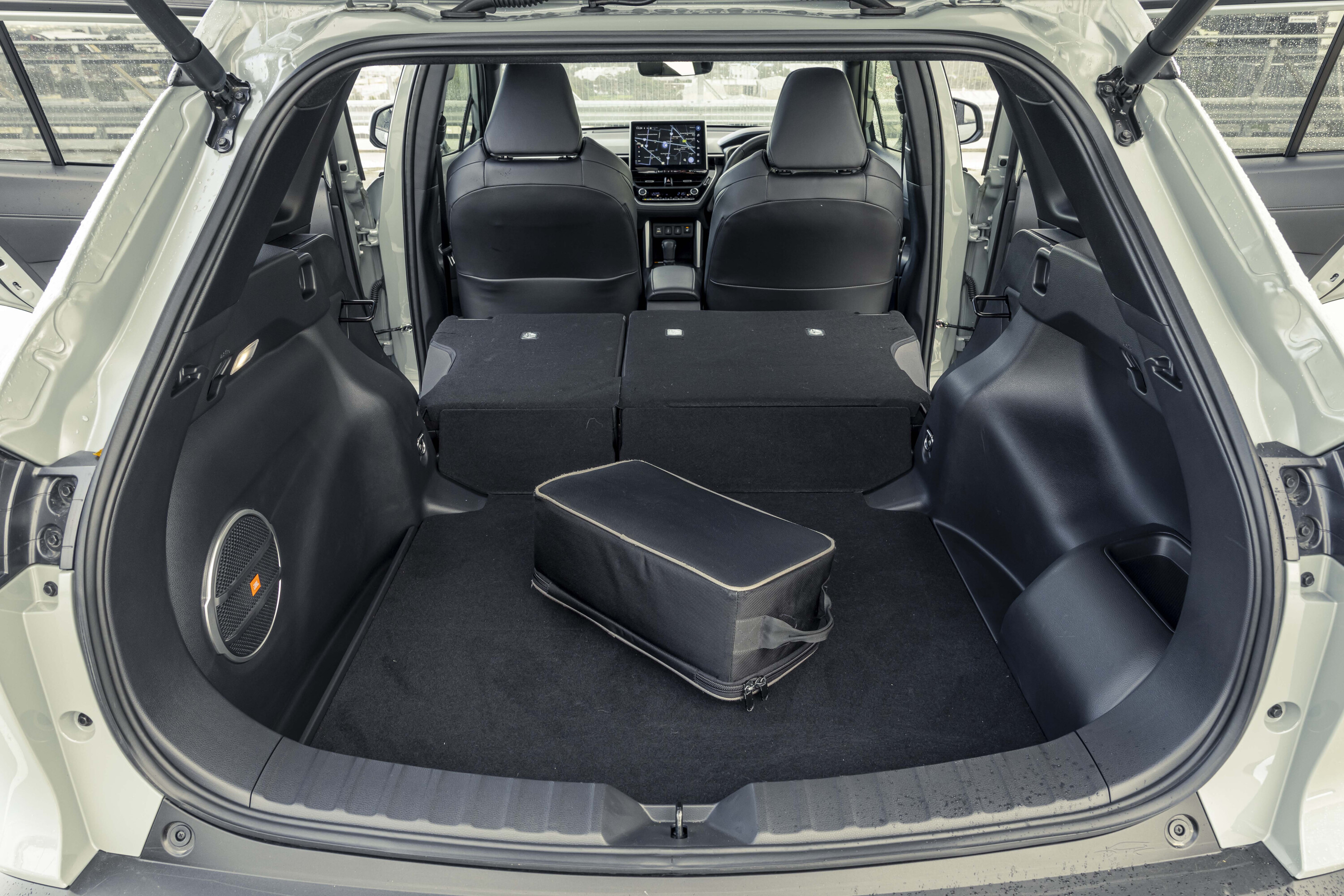
There’s also Toyota’s connected services system, which can automatically call emergency services in the event of an airbag deployment.
That includes adaptive cruise control, lane keep assist, blind-spot monitor, a driver attention monitor (which lets you know if it thinks you’re getting tired), eight airbags and a reversing camera with reverse-cross traffic assist.
Curiously, the Corolla Cross’s autonomous emergency braking is rated to city speeds only – not higher, inter-urban speeds like more advanced systems. It can detect cyclists and pedestrians, however, and works when reversing. There’s also Toyota’s connected services system, which can automatically call emergency services in the event of an airbag deployment.
The Corolla Cross is a peach to drive. The 83kW electric motor makes it feel like an electric car at lower speeds, meaning it’s quiet, smooth and responsive, giving it a luxurious feel.
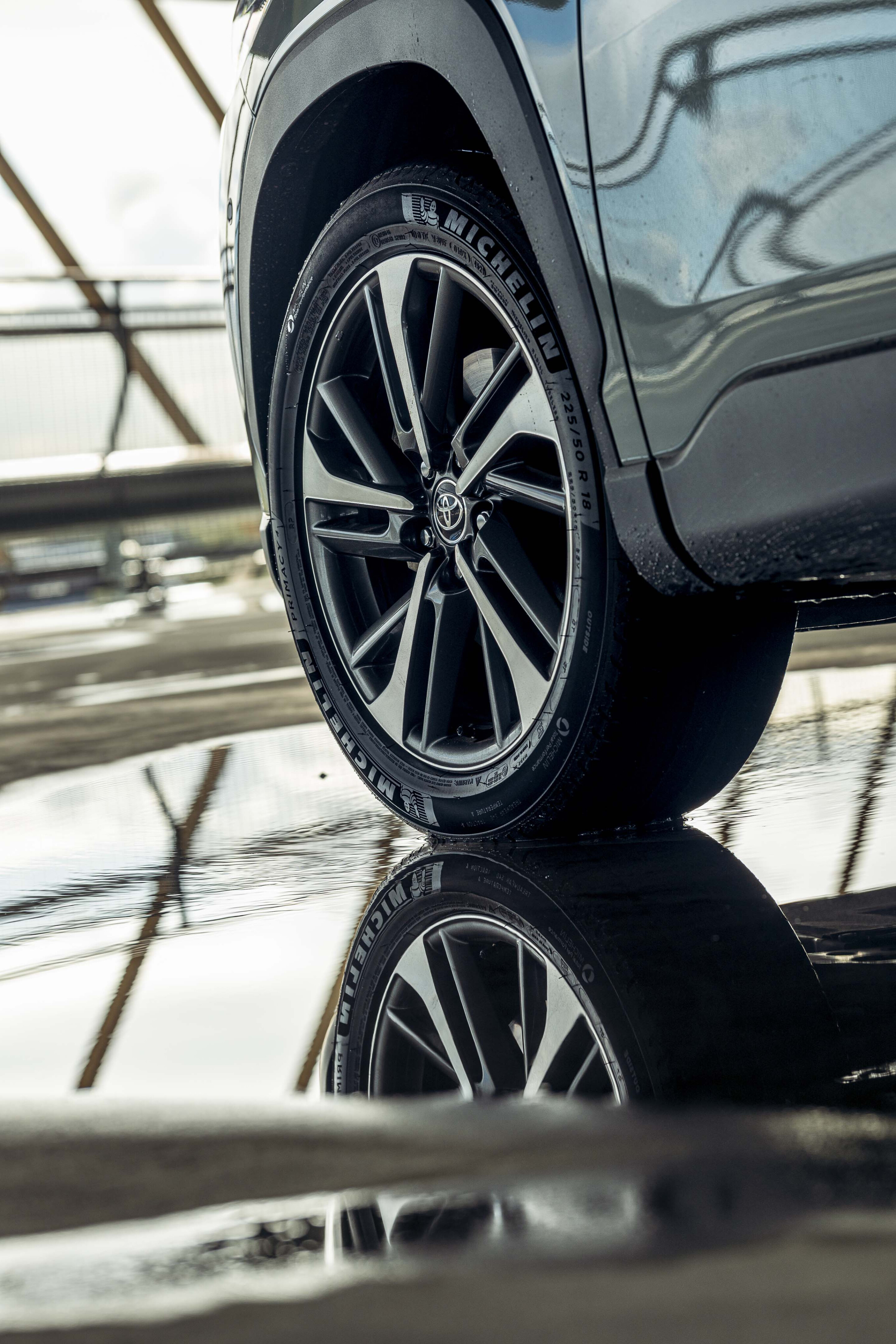
A small battery gives it minimal “EV-only range”, basically limited to car parks.
It gets extra points for its tight turning circle, too, making three-point turns a breeze. For acceleration, it has a good amount of power, able to do 0-100km/h in a brisk 7.7 seconds.
The ride quality is excellent, meaning you’ll feel minimal bumps as you waft along. The handling is also impressive for a crossover SUV.
Which brings us to the additional $3K for the all-wheel-drive model. If you plan on any ski trips, or live in a wet area, it’s worth spending. Same, too, if you’re often driving on winding roads or you like good handling, as the all-wheel-drive model gets more sophisticated independent rear suspension. Our front-drive test car uses a cheaper Torsion beam set-up.

Note that the AWD model does have a smaller boot – 380L versus 414L – and you give up a space-saver spare wheel for a puncture repair kit. It has a larger fuel tank, 43 litres versus 36.
Of course, efficiency is the real Corolla Cross drawcard, and we were extremely impressed by how little fuel this car uses. Toyota claims 4.3L/100km on the combined cycle (or 4.4L/100km for the all-wheel-drive model) and you can expect to regularly be in the “low fives” at the very least.
That’s incredible for a small SUV. The Corolla Cross also uses 91RON and costs about $250 to service (every 12 months or 15,000km) which is about as cheap as it gets in the new car world.
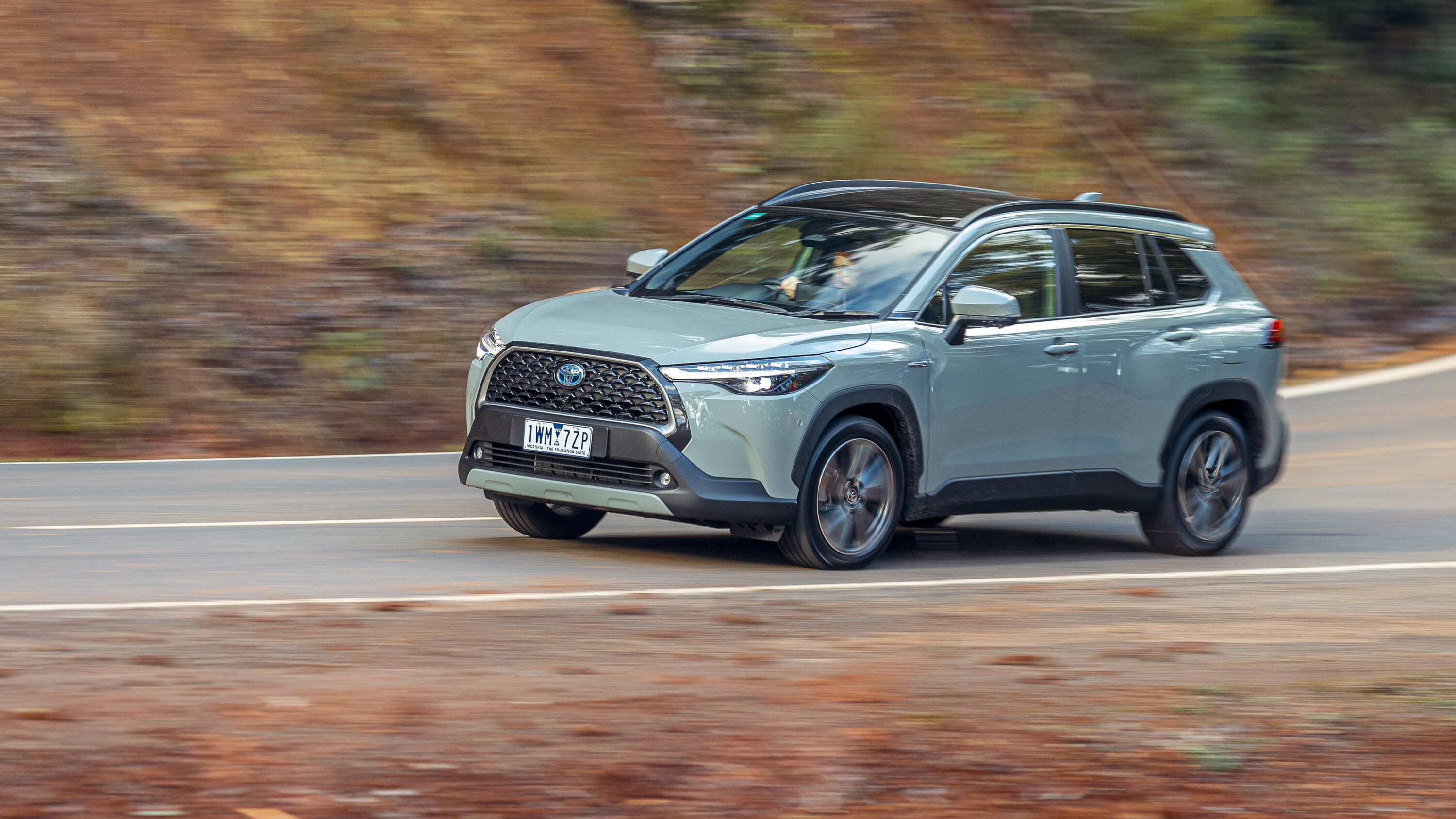
Its five-year, unlimited kilometre warranty can’t match Kia’s seven-year warranty but the engine and driveline is further warranted to seven years, and the battery is covered for 10 years. So it’s pretty close.
All in all, the Corolla Cross Atmos Hybrid is an excellent car with minimal flaws. We could easily see ourselves driving one every day, with few annoyances, and delighting at not just how it drives, or the crisp, clear Apple CarPlay, but just how little fuel it uses. It’s a very easy, low-risk car to recommend.
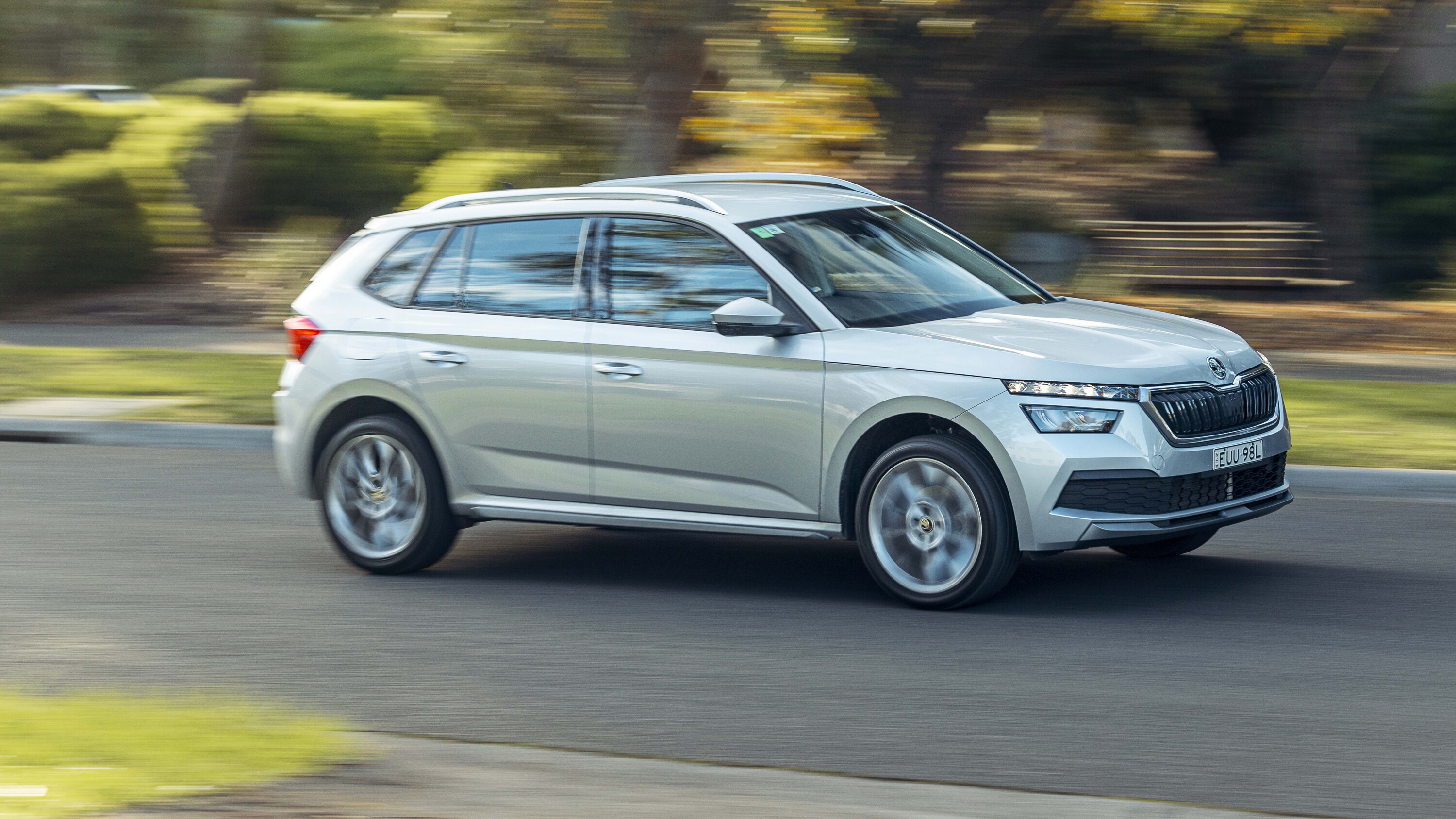
? Skoda Kamiq Style 85 TSI: 8.0/10
Value, style and space see the Kamiq nab a podium place
?️ Alex Inwood
Things we like
- Impressive fuel economy
- Cabin is incredibly roomy and comfortable
- Deep boot has lots of u2018simply cleveru2019 touches
Not so much…
- Price rise over the same model offered 12 months earlier
- 3-cyl turbo lacks grunt in this company and needs 95RON
- Dual-clutch not as smooth or as responsive as a conventional auto
| Skoda Kamiq Style 85TSI | |
|---|---|
| Price | $37,990 (driveaway) |
| Engine | 1.0L 3cyl turbo |
| Power/torque | 85kW/200Nm |
| Gearbox | 7-speed dual-clutch |
| Economy claimed/tested | 5.4/6.1L |
| Drive | FWD |
| Boot size | 400L/1395L |
| Weight | 1305kg (tare) |
| Warranty | 7yr/unlimited |
| Servicing | 12 months/15,000km |
| 5yr service costs | $1800 |
| Fuel | 95 RON |
| L/W/H/WB | 4241/1793/1531/2651 |
Smaller, cheaper and significantly less powerful than any other contender in this test, finishing in third place is quite an achievement for the Skoda Kamiq. Especially when you consider its recent price hike…
Back in 2021 you could buy this exact Kamiq for $29,990 driveaway. Now, though, just 18 months later, the very same SUV carries a $37,990 price tag. Ouch. Worse still is that Skoda hasn’t softened the blow by throwing in a host of extra standard equipment. Trims levels, connectivity and safety systems remains as they were.
So the Kamiq is no longer the segment-leading bargain it once was but don’t confuse that with thinking it’s now poor value. In fact, in the context of this test, the exact opposite is true.
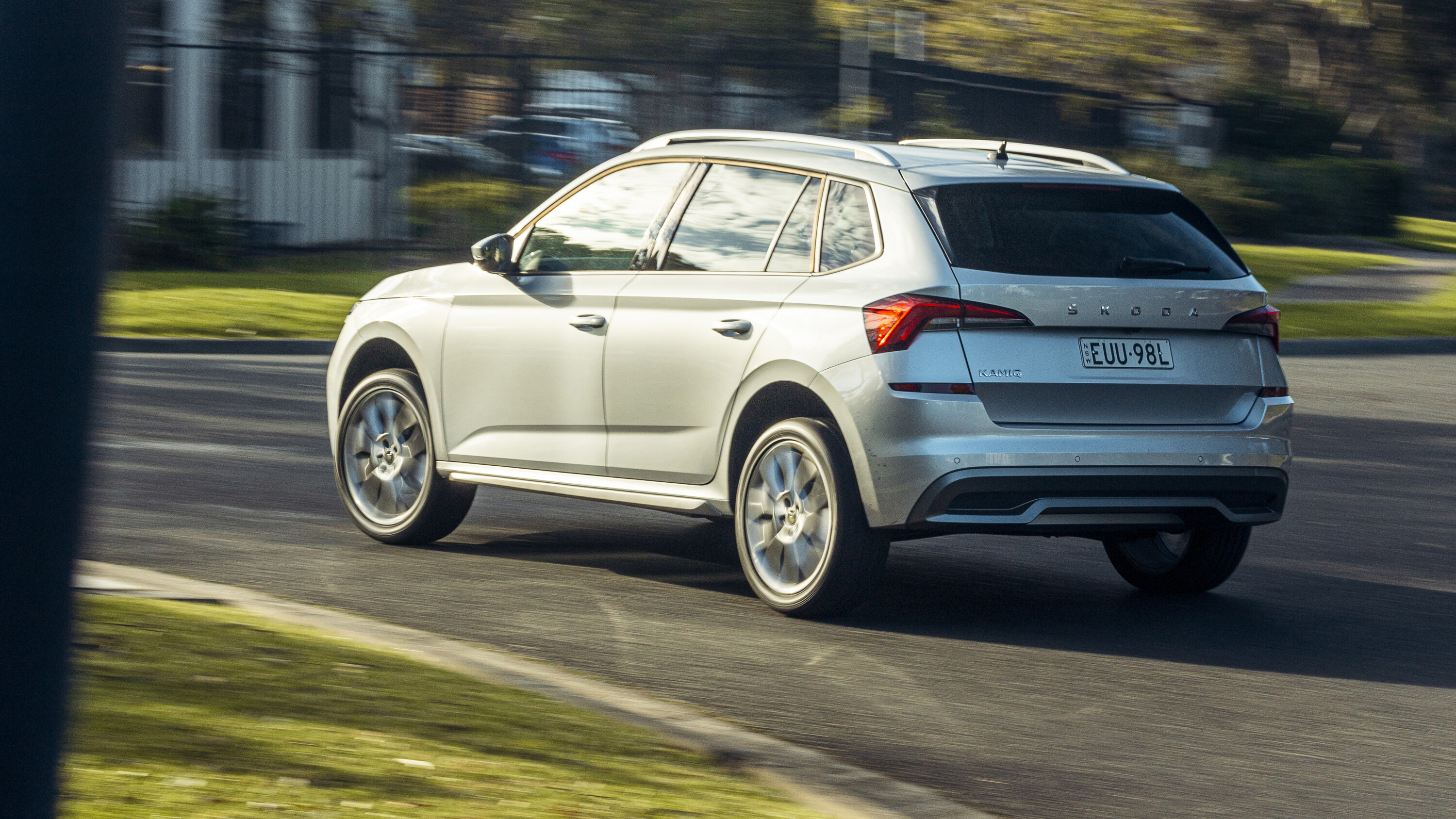
Represented here as the entry-level Kamiq 85 TSI Style, the Skoda is the cheapest of our eight contenders by some margin once you factor in on-road costs.
Part of that is down to it being the entry level model to the Skoda range – the 110 TSI Monte Carlo and 110TSI Signature are also available for $41,990 and $42,990 respectively – but even in test littered with high-spec rivals, the Kamiq doesn’t feel like a budget offering.
The level of standard equipment is high (18in alloys, digital instruments, wireless phone charging, adaptive cruise control, dual-zone climate control, LED headlights, keyless entry and an 8.0-inch touchscreen are all included) and although the cabin design can initially seem a touch business-like, closer inspection shows great care has gone into making an entry-level interior feel special and premium.
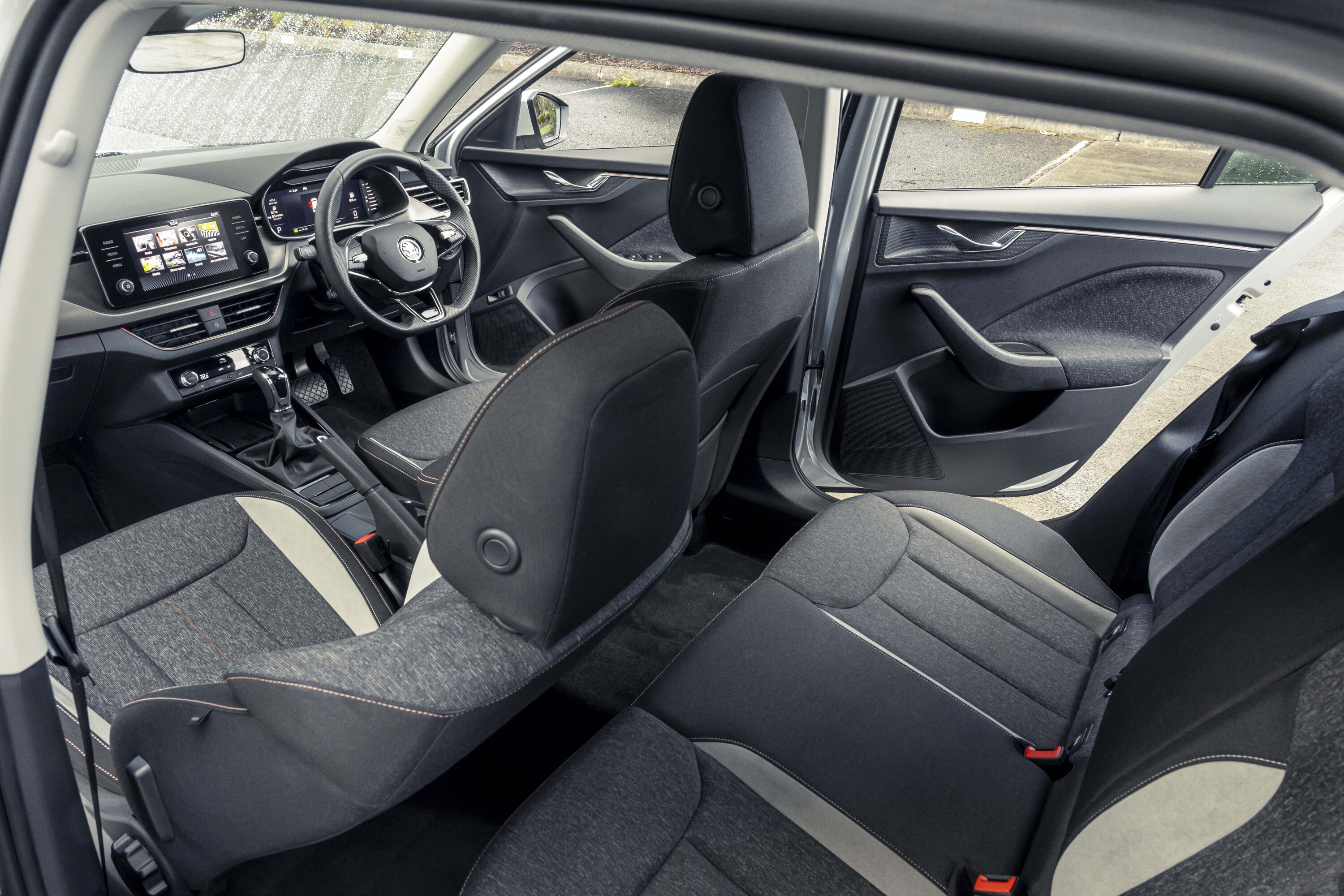
The textured plastics on the doors are superior to those in the Kona and Seltos, there’s a subtle pattern that runs across the dash inserts, and the floating door handle design is a nice touch, too.
Even the cloth seats excellent, with their comfort and support making up for the fact that they’re manually adjustable.
Look hard and you can discover some scratchier plastics below the beltline, and there are a few ergonomic foibles like having a manual dial to adjust the temp control (great!) but burying the fan speed control in the centre screen (fail), but the Kamiq’s cabin certainly doesn’t feel like the cheapest of this group.
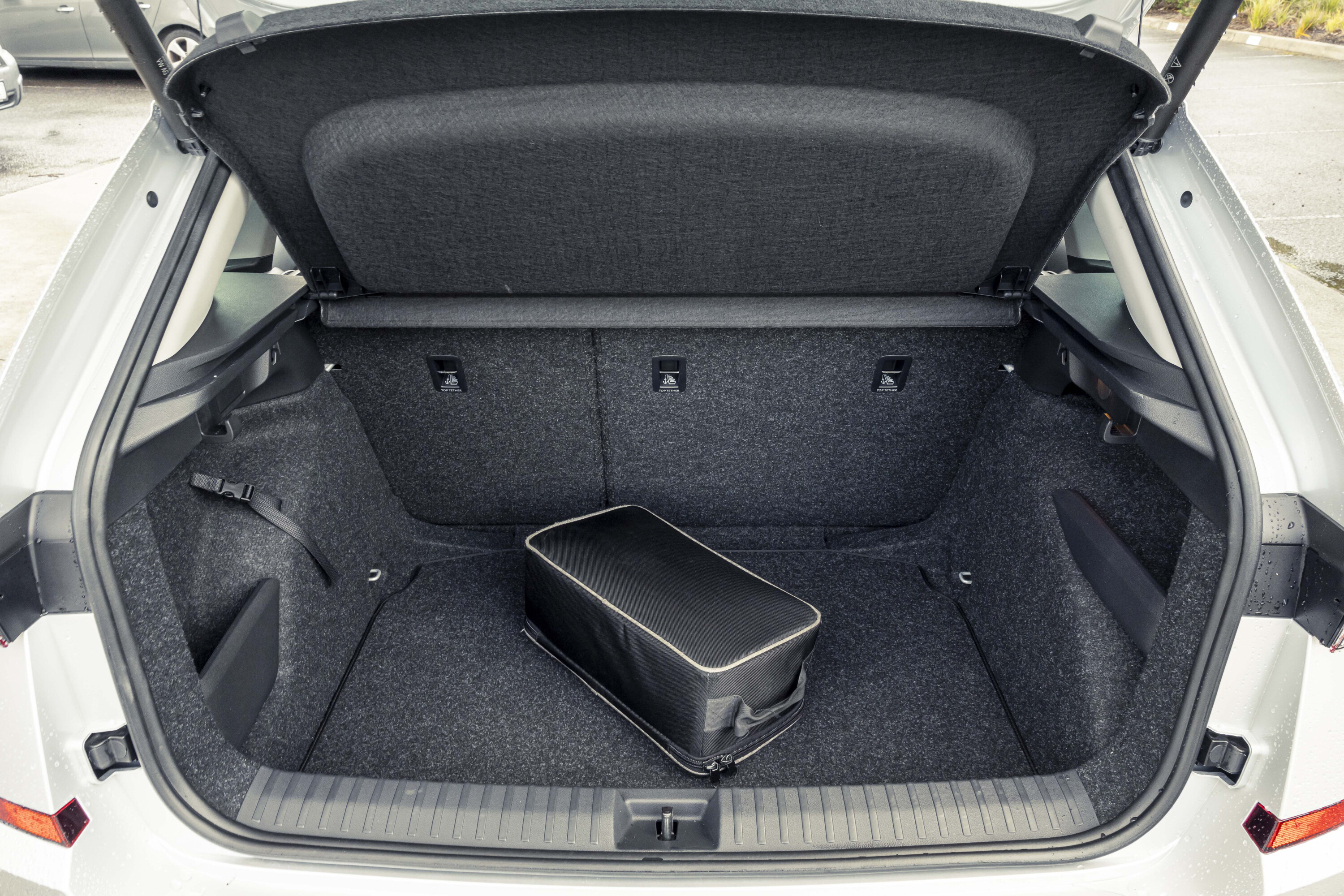
The boot is also one of the best of this group.
Better still is how cleverly the Kamiq uses its space. Despite being the smallest of our eight contenders, the Kamiq’s second row rivals the new Kona for room and may even have the edge when it comes to knee and head room. Comfortable and supportive back seat, too, and you score two additional USB-C ports and dedicated air vents, though there’s no centre arm rest.
The boot is also one of the best of this group. Impressively deep, despite also housing a full-size spare, the Kamiq’s 400L boot includes a reversible carpet mat with a rubber underside, four bags hooks, a useful storage cubby, a rail to hook things on and a strap for clipping in loose items.
One area the Kamiq does does lag behind this group, however, is what’s under the bonnet. Fitted with an 85kW/200Nm 1.0-litre 3cyl turbo, the Kamiq 85TSI is the least powerful contender here and while it’s also the lightest by around 100kg, it is noticeably less potent when attempting an overtake or accelerating up to 100km/h.
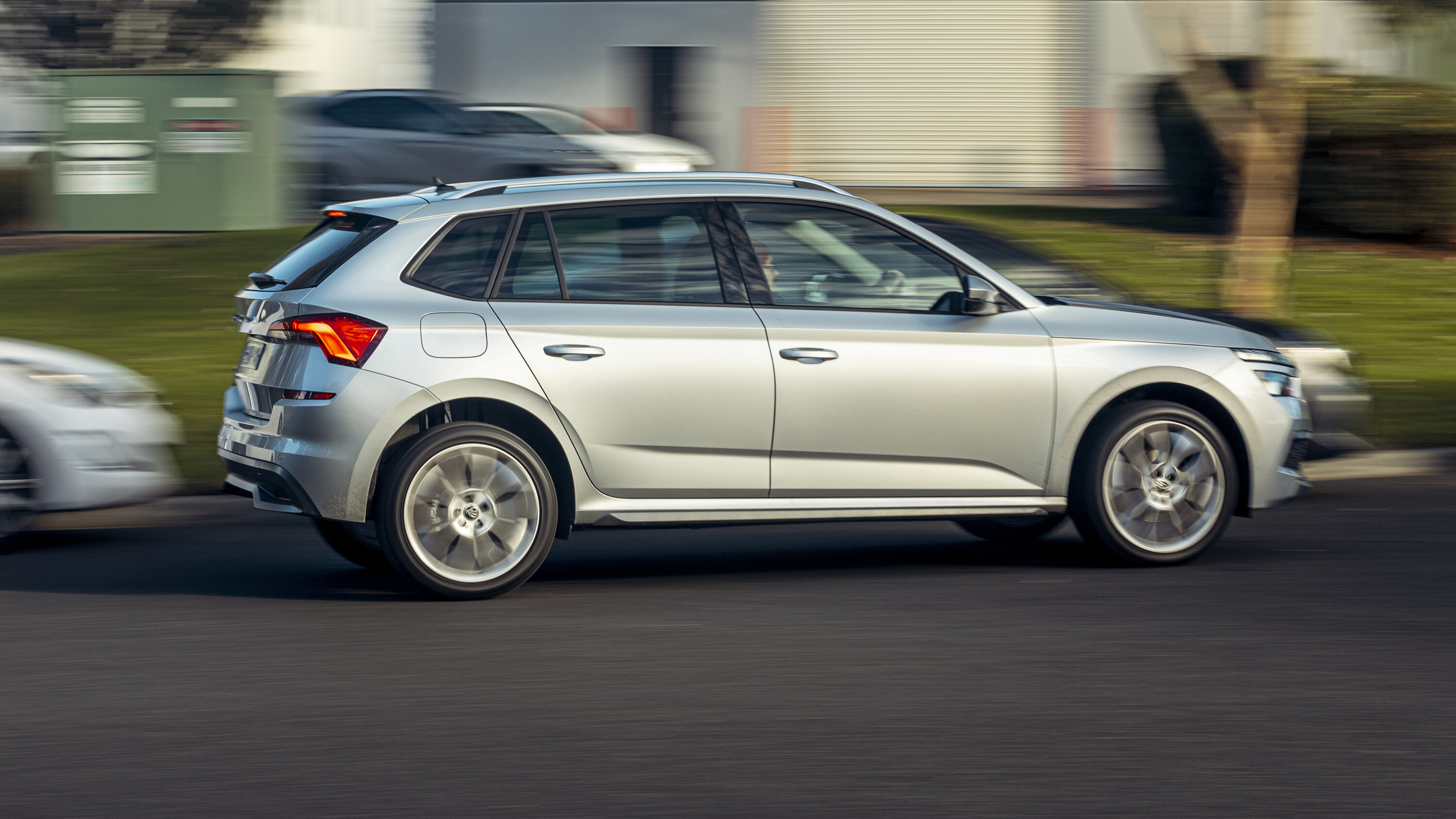
There’s plenty of powertrain vibration too, which some might optimistically call part of a three-cylinder’s off-beat charm, but others might find intrusive.
The dual-clutch auto doesn’t help, either. It’s overly keen to shift into a high gear, which can make the 1.0L engine feel laboured, and it can also be jerky and slow to respond.
The trade off, however, is the Kamiq’s powertrain is impressively efficient. With an as-tested fuel figure of 6.05L the Skoda trailed only the Corolla Cross hybrid for fuel use. The handling is impressively cohesive, too, thanks to steering that is light and accurate, grippy Goodyear tyres and a chassis that strikes a nice balance between comfort and control on 18-inch alloys.
Throw in a 7-year/unlimited km warrant and the second cheapest servicing costs and it’s clear the Kamiq is punching above its weight. If only it was still $30K driveway. What a bargain that was…
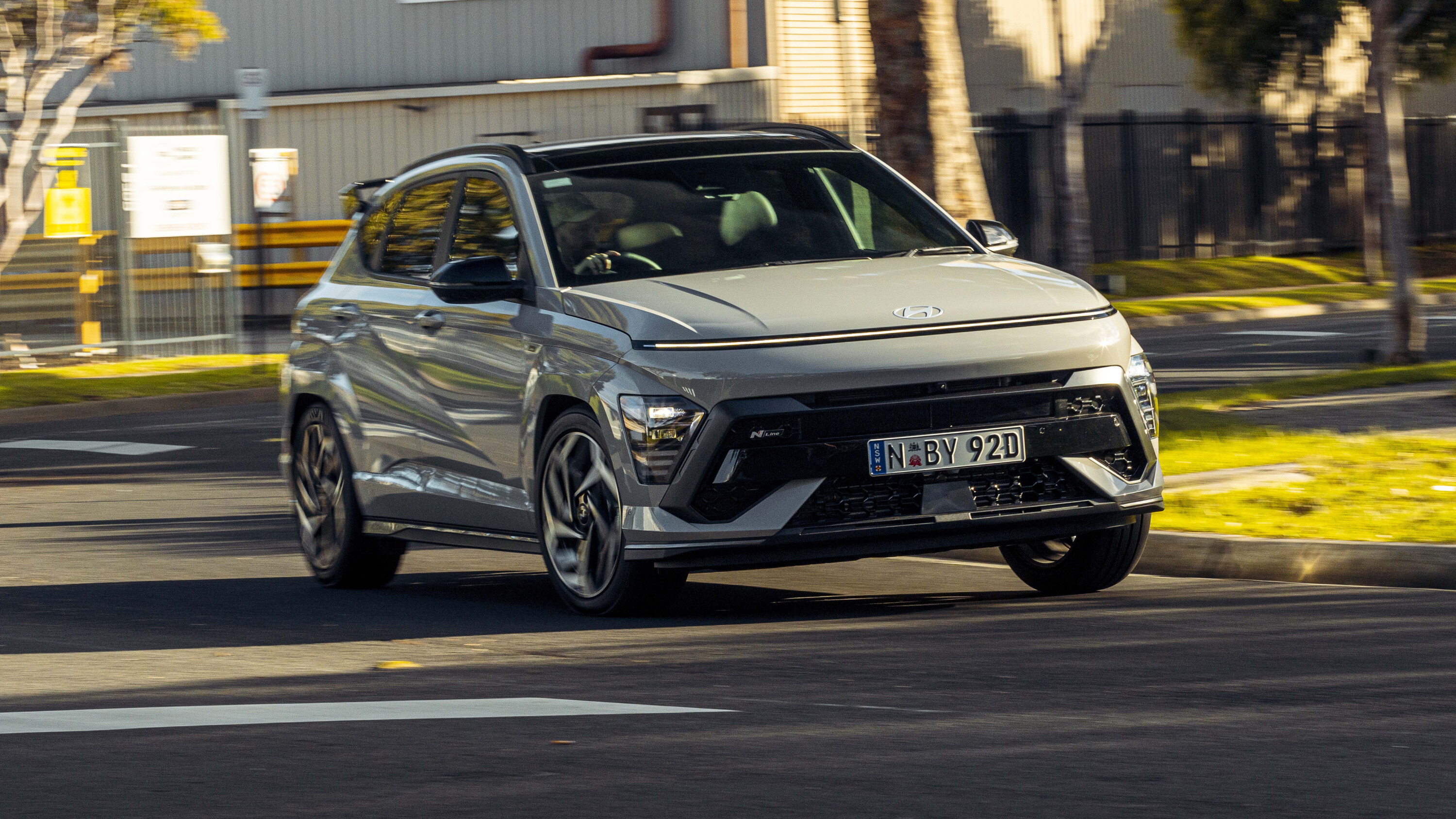
? Hyundai Kona Premium N-Line 1.6T AWD: 8.5/10
Better in every way, new Kona falls agonising short of victory
?️ Alex Inwood
Things we like
- Eye catching design oozes wow factor
- Cabin feels special and offers class leading levels of comfort
- Space and storage
- Loads of standard equipment and active safety gear
Not so much…
- Short service intervals for 1.6T AWD models
- Heaviest drinker of all our contenders
- Rotary gear selector stalk takes getting used to
| Hyundai Kona N-Line Premium | |
|---|---|
| Price | $46,500 |
| Engine | 1.6L 4cyl turbo |
| Power/torque | 146kW/265Nm |
| Gearbox | 8-speed auto |
| Economy claimed/tested | 7.6L/11.0L |
| Drive | AWD |
| Boot size | 407L/1241L |
| Weight | 1450kg/1585kg |
| Warranty | 5yr/unlimited |
| Servicing | 12 months/10,000km |
| 5yr service costs | $2394 |
| Fuel | 91 RON/E10 |
| L/W/H/WB | 4385/1825/1590/2660 |
Roomier, quieter, and now markedly better to drive, this second-generation Hyundai Kona is a huge improvement over the model it replaces.
It’s also, if such a thing is possible, even funkier to look at. Tested here in Premium N-Line guise, this is as bold and as expensive as the new Kona gets until the electrified models arrive later this year. And it’s oozing with visual X-Factor.
More cohesive to look at, yet just as busy, as the first-gen Kona, much of our test car’s visual punch is down to the N-Line pack (standard on 1.6T AWD models but a $3000-4000 option on other variants) which adds larger 19-inch wheels, chrome exhaust tips, a twin-element rear wing, and body-coloured cladding. The result is a small SUV that, in this company, feels daring and overtly sporty.
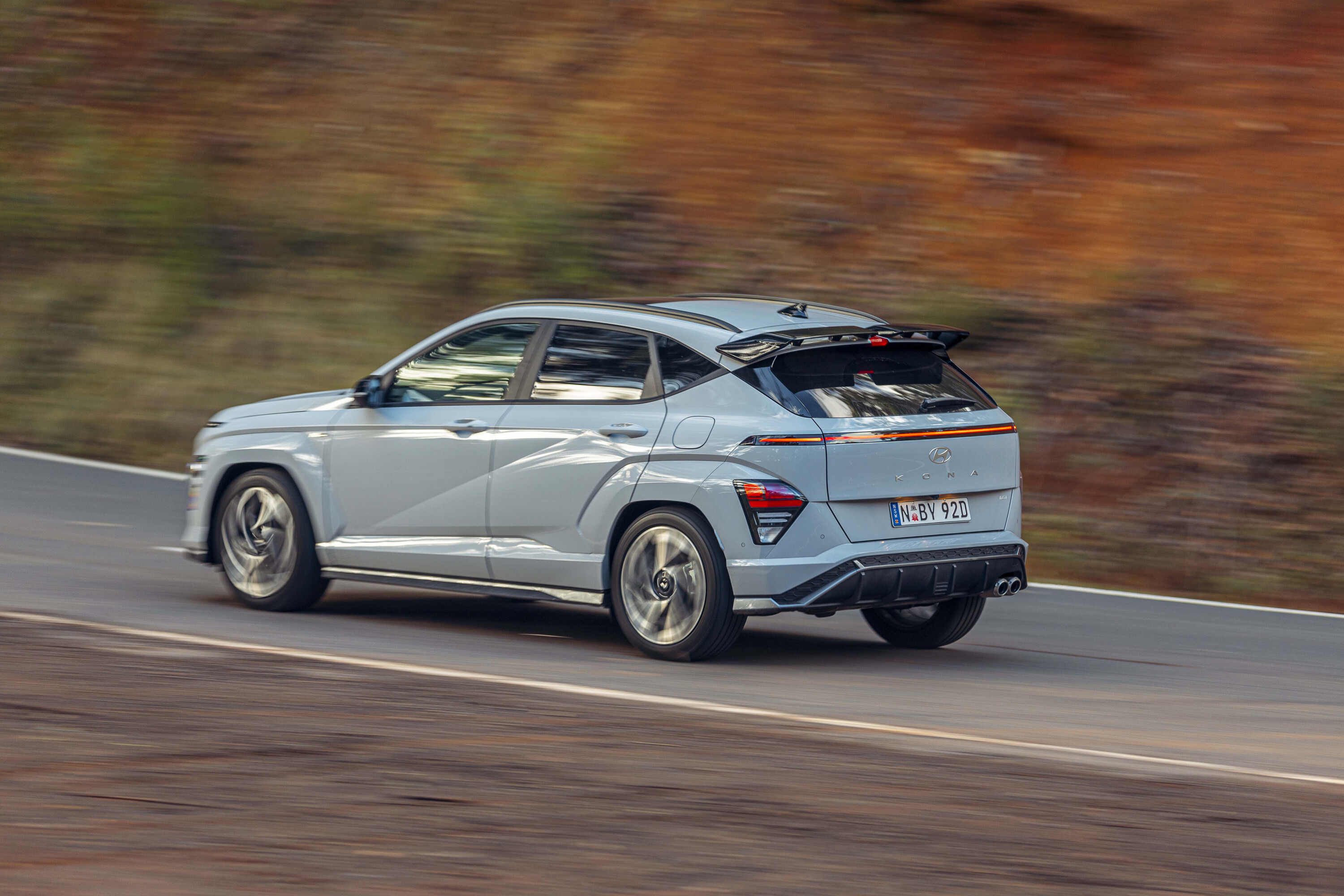
Inspiration from Hyundai’s flagship EV, the Ioniq 5, is obvious in the interior design
It’s a similar story inside, too. There are two trim levels in the new Kona range – the standard Kona or the Kona Premium – with the latter adding a host of desirable goodies like a full-width front light bar, heated/ventilated front seats, a heated steering wheel, acoustic windscreen, paddle shifters, native sat-nav, and heated rear seats.
The N-Line pack also brings leather/Alcantara seats, a sportier steering wheel, alloy pedals and red detailing on the dash to create a cabin that looks and feels remarkably premium for a $45K small SUV.
Inspiration from Hyundai’s flagship EV, the Ioniq 5, is obvious in the interior design, and the build quality is impressive. Hard plastics do abound, but the textures and finishes are miles better than Hyundais of old. And there’s plenty of substance to back up the focus on style.
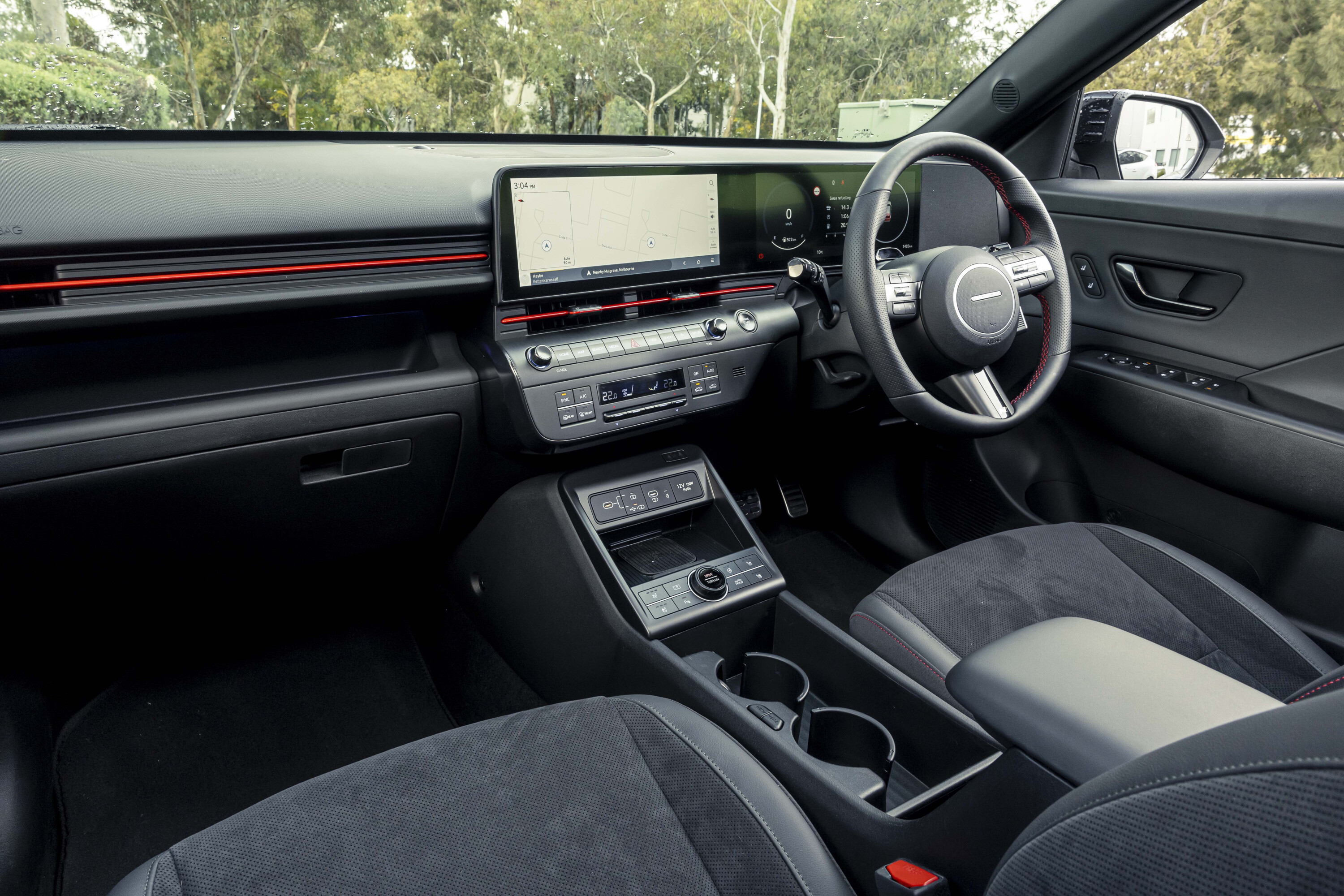
Underneath the Kona rides on Hyundai’s fresh K3 platform and it’s now 145mm longer, 25mm wider, 20mm taller and rolls on a wheelbase stretched by 60mm.
This translates into a far roomier cabin and Hyundai’s designers have cleverly maximised the available space by fitting front seats that are 30 percent thinner, which ekes out additional rear knee room. The back seat is now one of this segment’s roomiest and 6ft adults have ample knee, head, and shoulder room.
There are dedicated rear air vents, too, as well as two USB-C ports which complement two additional USB-Cs and a wireless charging pad up front. The Kona is also the only contender to offer an adjustable backrest for the rear seat.
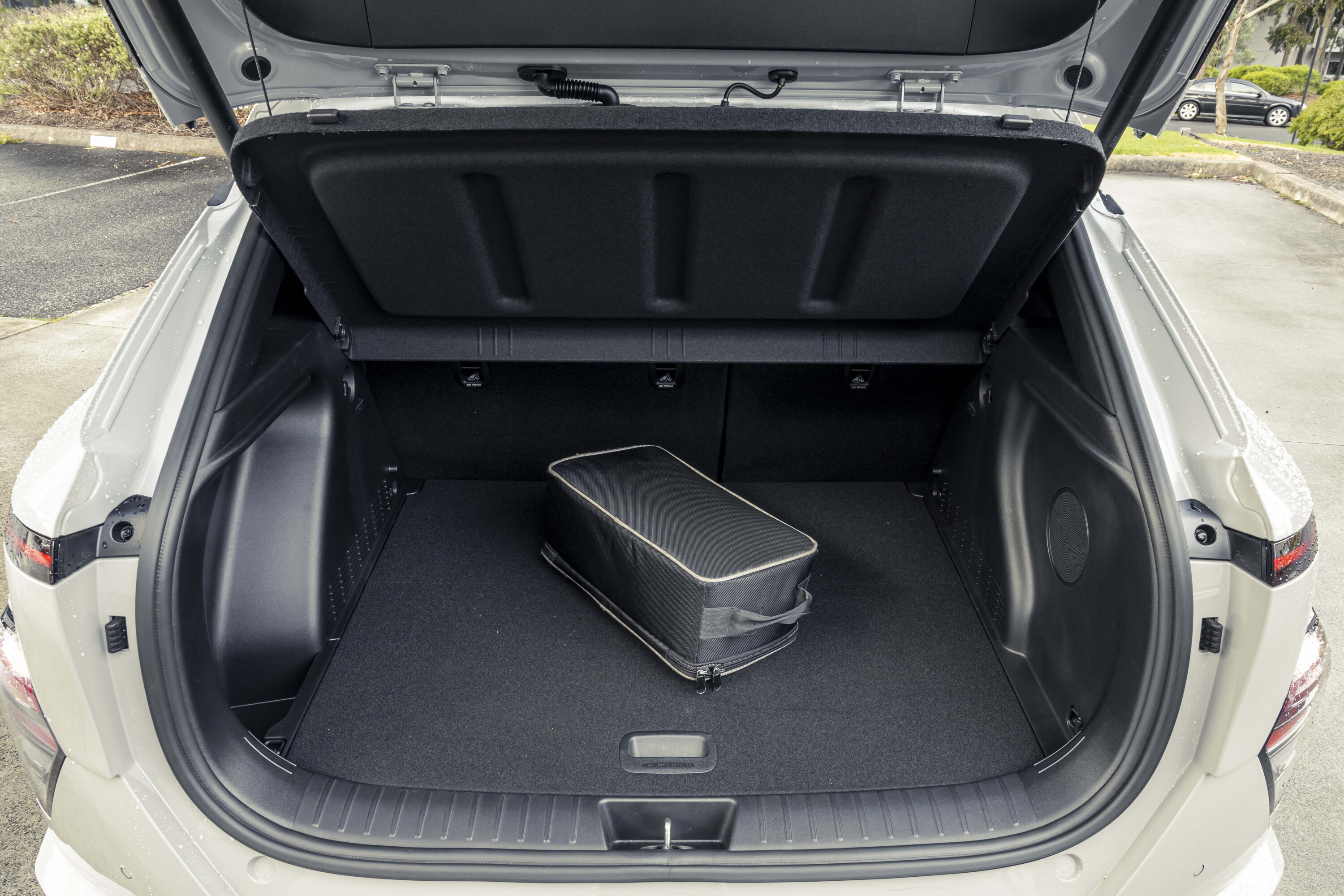
Cabin storage is class-leading. Moving the gear shifter to a rotary stalk has freed up the centre console, the door bins are large and there’s a useful storage shelf built into the dash. Boot space is another improvement.
Premium versions gain an electric tailgate, and the 407L boot is lower, wider, and larger than before. There’s also a two-stage boot floor, three bag hooks, and an ingenious design for storing the parcel shelf against the back of the rear seats for when you want to carry larger items.
It’s also a fun SUV to hustle on a twisty road. The 1.6-litre turbo, which is now paired with a smooth shifting 8-speed automatic, offers ample performance and the ride on 19in alloys is comfortable and composed.
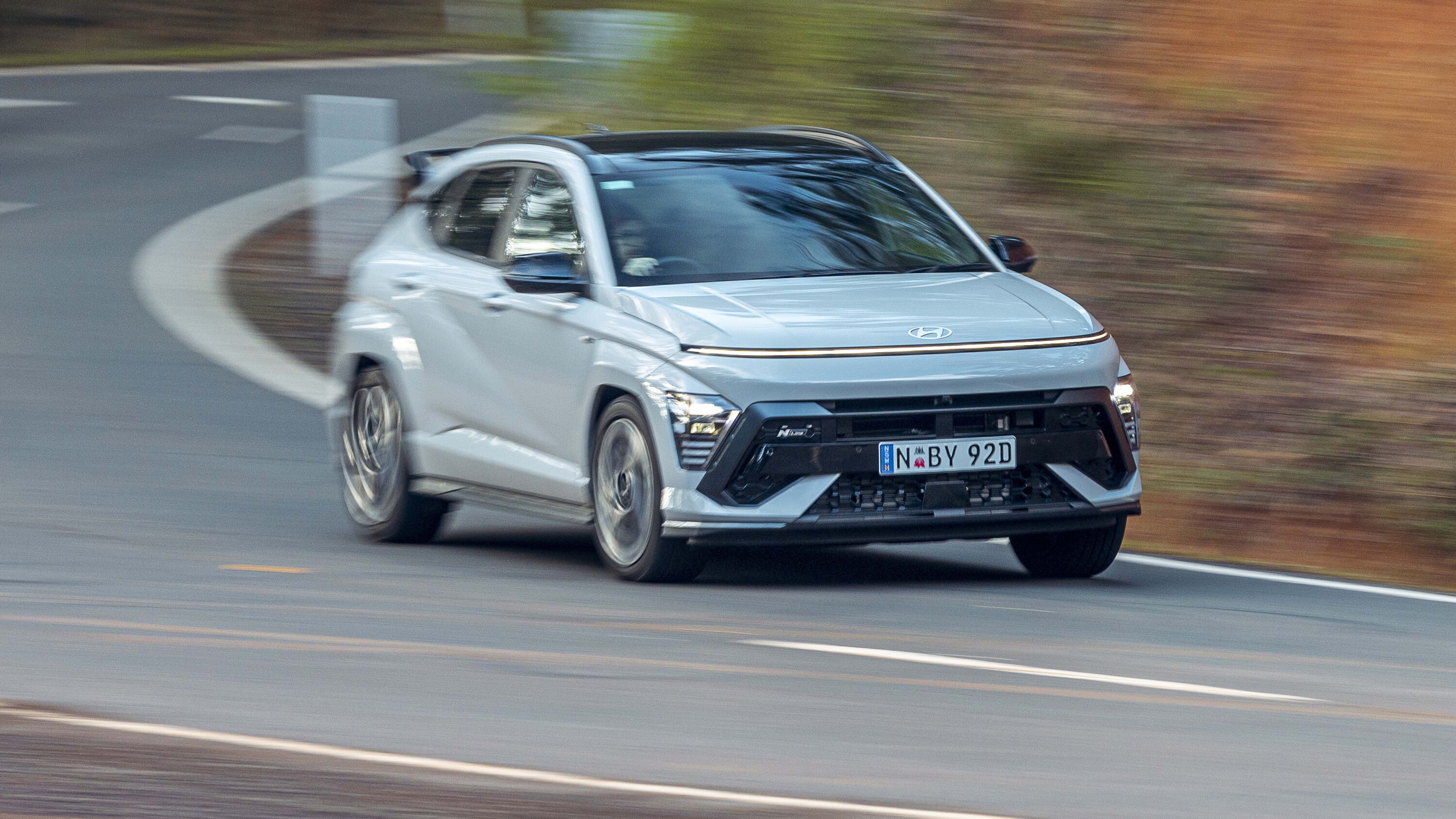
The 1.6T was the heaviest drinker of all our contenders, though, at 11L/100km and it also has short 10,000km service intervals which further erodes a value equation that, thanks to a $46,500 sticker price, was already looking a touch shaky.
Yet it’s a worthy second place for the Kona. Stylish, premium and refined, this second-gen model now has the comfort, space and practicality to match its eye-catching looks.
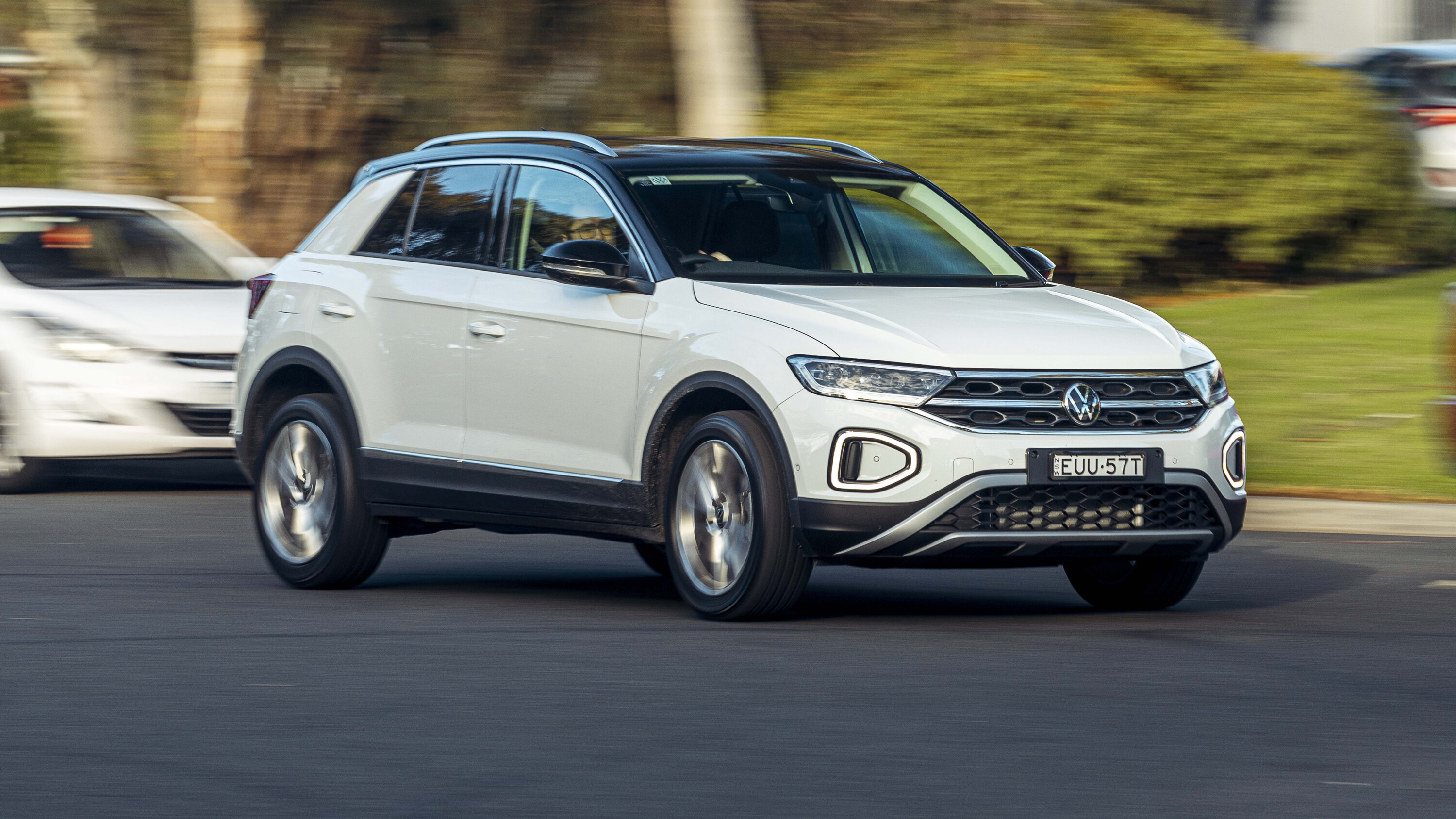
? Volkswagen T-Roc 110 TSI Style: 8.5/10
Humble high-riding hatchback is a high-achiever
?️ Tony O’Kane
Things we like
- Efficient and willing engine
- Exceptional ride/handling balance
- Value for money
Not so much…
- Missing some specification compared to the others
- Too many hard cabin plastics
| VW T-Roc 110 TSI Style | |
|---|---|
| Price | $37,100 |
| Engine | 1.4L 4cyl turbo |
| Power/torque | 110kW/250Nm |
| Gearbox | 8-speed auto |
| Economy claimed/tested | 6.3L/6.6L |
| Drive | FWD |
| Boot size | 445L/1290L |
| Weight | 1400kg |
| Warranty | 5yr/unlimited |
| Servicing | 12 months/15,000km |
| 5yr service costs | $2450 |
| Fuel | 95 RON |
| L/W/H/WB | 4251/1819/1583/2603 |
Nailing the fundamentals; that’s the reason the Volkswagen T-Roc 110 TSI Style wins this test.
Impressively premium and polished for an affordable small SUV, the T-Roc forgoes flashy electronic bells and whistles and instead focuses on the core ingredients of “what makes a great car”.
Take its suspension, for example. Roadholding, dynamics and driver satisfaction are key (you’re reading Wheels, after all), but ride comfort is paramount in the SUV segment, too. The T-Roc nails both. Supple when it needs to be, despite lower profile rubber than other cars in this test, the T-Roc’s expertly judged ride also delivers fluid handling that makes it properly engaging on a twisty road.

The spicy T-Roc R might be the real ‘driver’s choice’ of the T-Roc family, but there’s still plenty of dynamic talent in the more humble T-Roc 110TSI Style.
Strong efficiency credentials, too, thanks to its 1.4-litre turbo petrol returning the third-lowest fuel consumption figure of this group.
But a good chassis only gets enjoyed occasionally. A good interior is enjoyed every time you open the door and the T-Roc’s cabin quality is hard to fault.
Lovely fine-grained leather wraps the steering wheel, the elbow rests on the doors have soft black vinyl with a (real) contrast stitch, and the grippy microsuede seat upholstery and deep bolsters won universal praise from the testing team. The seats may be manually adjusted, but they were easily the most supportive of any SUV here.

However, the T-Roc’s 445 litre boot is the largest here, delivering a solid practicality win.
You can see where VW has kept costs down, however. Hard plastic uppers for the door cards, a solid plastic dashpad with moulded-in seam stitching, shiny leathergrain textures on the lower dash and scratch-magnet piano black around the transmission selector undermine the sense of luxury a little, yet the T-Roc’s cabin is impressively premium.
The back seat also provides plentiful support for adult frames, though the centre position is hampered by a sizable centre tunnel and much firmer cushioning. Better to leave it unoccupied so your backseaters can enjoy the fold-down armrest and dual USB-C outlets.
Front cabin stowage could be better, too. There’s nothing like the Kona’s innovative centre console, just a fairly conventional cupholders-n’-centrebox arrangement, a reasonably-sized glovebox, and a wireless phone charging pad that’s a bit difficult to access with the transmission in Park. However, the T-Roc’s 445 litre boot is the largest here, delivering a solid practicality win.
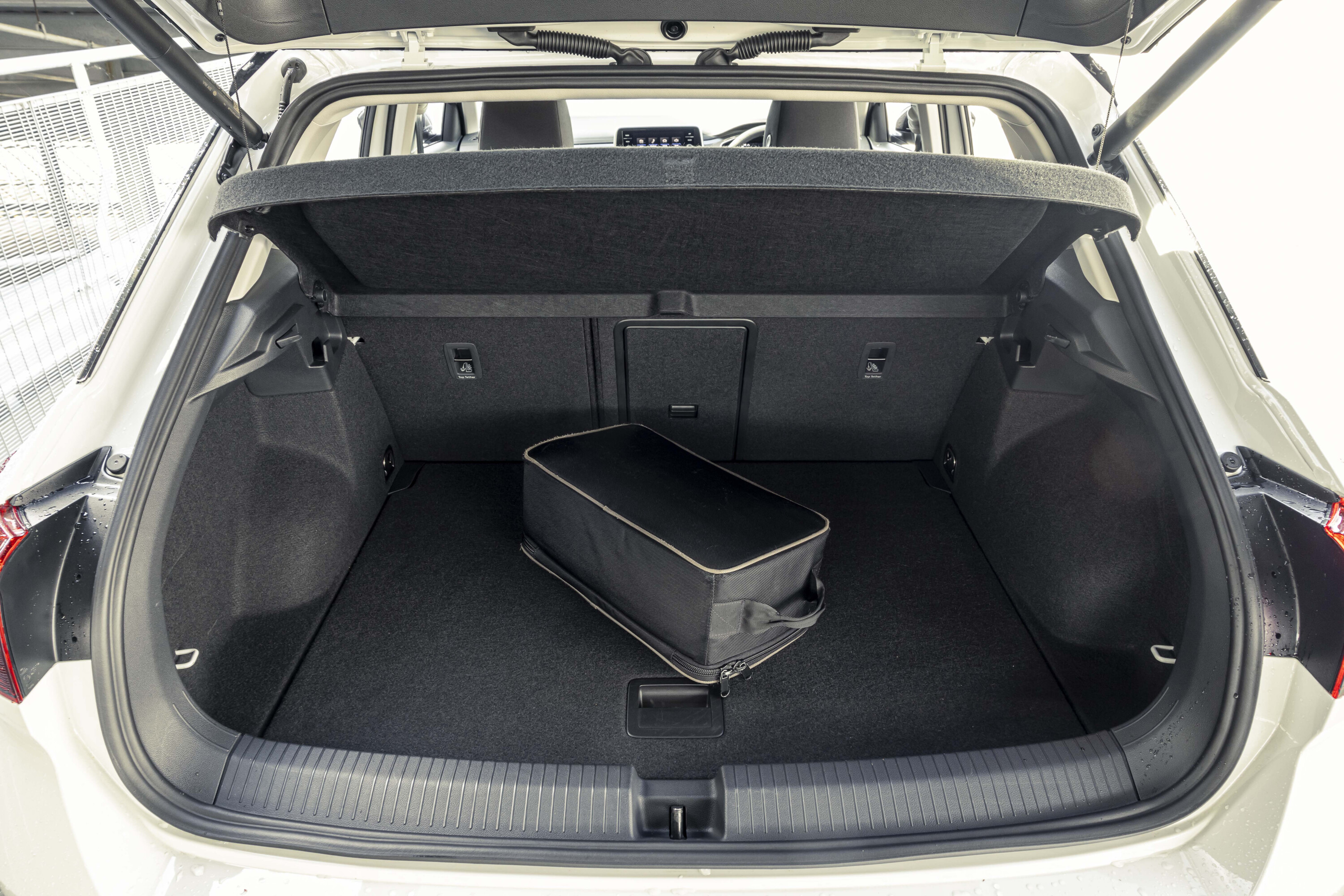
It’s worth mentioning that the spec we received for this test is a little at odds with the rest of this crowd.
The T-Roc 110TSI Style is effectively the base model if you don’t count the special edition T-Roc CityLife, while almost everything else is either at the top of their respective tree or close to it.
However, at the time of publishing VW Australia will have rectified this anyway: built-in GPS, a widescreen electronic instrument panel, rear cross traffic alert, blind spot monitoring and wireless Android Auto/Apple Carplay will be standard on the T-Roc Style by the time you read this, boosting the RRP to $38,890.
But here’s the kicker. Even though the $45,200 T-Roc 140TSI R-Line would have been a better match to the others on price, power and equipment, the lower spec 110TSI still had what it took to rise above them all while also being one of the cheapest. When you get the fundamentals right, victory becomes easy.
2023 Best Small SUV series
Looking to get into a brand-new small SUV? Our stories below will guide you to the model that best suits your needs!


